A Limited Guide to Commander Masters

I play a lot of Magic with my daughter, and I realized Commander was maybe not the right format for us when she informed me that board wipes were cheating and therefore illegal. I reluctantly agreed, and she promptly (and gleefully) slapped together a Slivers deck and trounced me game after game after game after -
- anyway. As usual Limited makes everything better, and I’ve been pleasantly surprised by how much I’ve enjoyed previous Limited Commander sets. Commander Masters looks to up the ante by throwing in the flair of a Masters set, with all the power and mechanical complexity that implies. What exactly does that mean? Let’s take a look!
How to Play Limited Commander
Actually let’s start by summarizing the rules of Limited Commander:
- Each booster has 20 cards. When you make a pick, you pick two cards instead of one.
- You must draft your commander(s), and your deck must match the color identity of your commander(s).
- Every mono-color or colorless legendary creature is considered to have Partner, meaning you can pair it with another mono-color/colorless legendary creature to form a Commander pair. This rule makes it far easier to find the needed Commanders for your deck.
- In addition, players may always use The Prismatic Piper (or even two). This is not ideal, as it fulfills no role other than providing a color identity. Just be aware that it’s available if absolutely needed.
- Your deck must be sixty cards. There is no singleton restriction for cards in your deck.
- Matches will often be played multiplayer, so keep that in mind!
Mechanics and Commander Themes
Masters sets have a far greater level of complexity than a typical Magic set, and as such they often transcend the idea of “mechanics” and ascend to the higher plane of “theme”. For example, a Masters set with a graveyard theme might include any and all graveyard mechanics from past sets - everything from Surveil to Threshold to Flashback and more. In addition, it’s possible for such mechanics to appear on only a single card in the entire set. So with that in mind, let’s skip the mechanics of CMM, save its themes for the archetype breakdown later, and look at some Commander-specific mechanics.
Commander
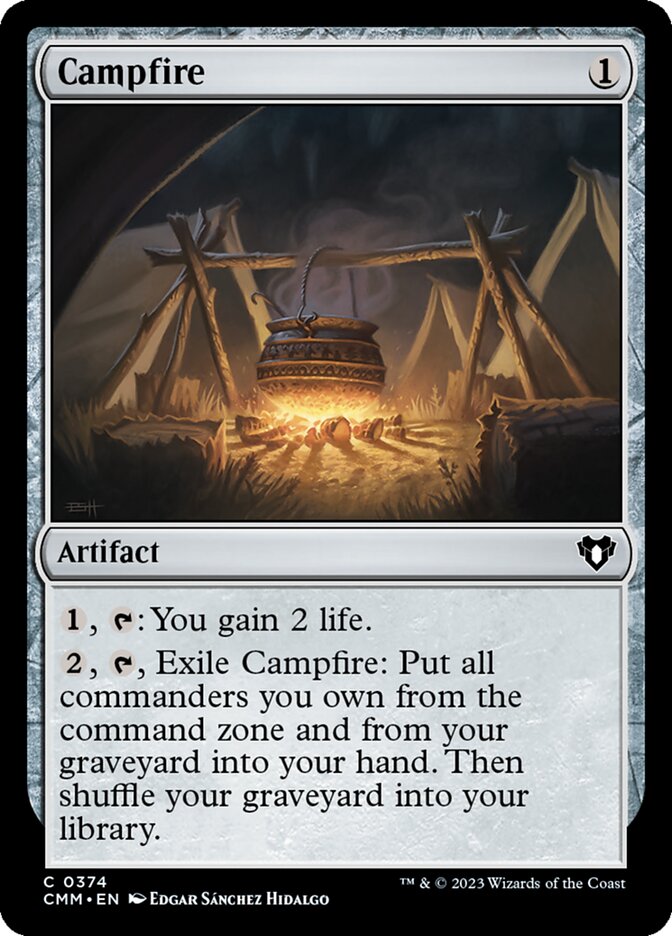
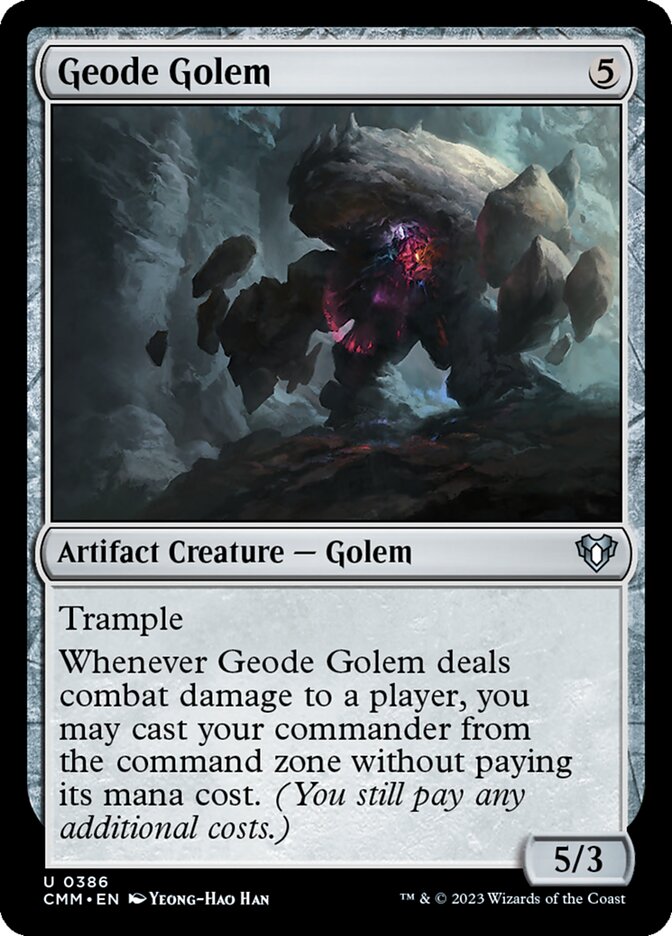
Your Commander can provide more than a free “in-hand” permanent and a color identity. Cards such as Campfire and Geode Golem give you additional ways to interact with your Commander. Other cards might gain a buff or be free to cast if you have a Commander in play.
Multiplayer
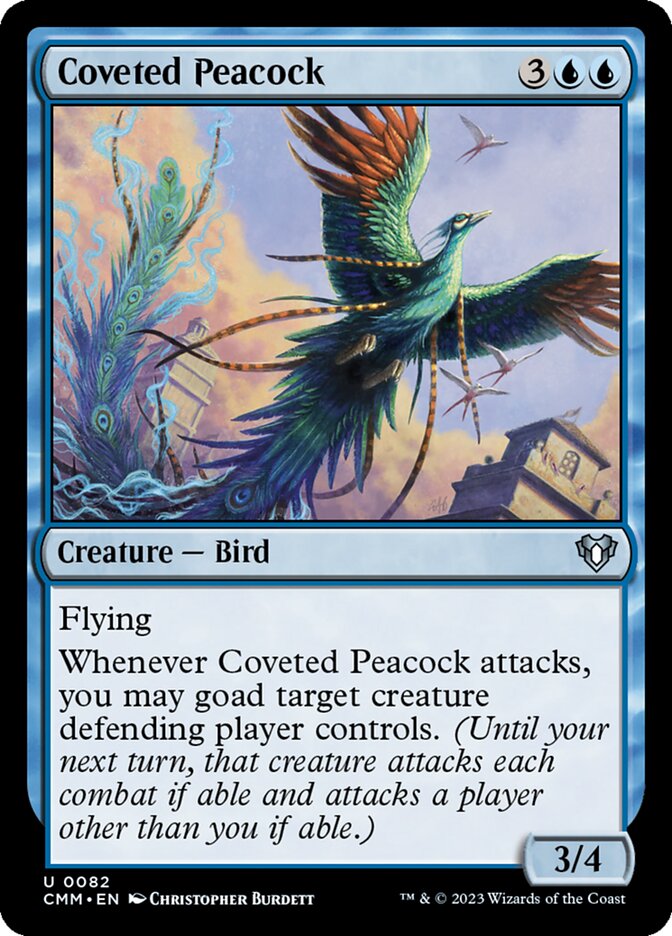

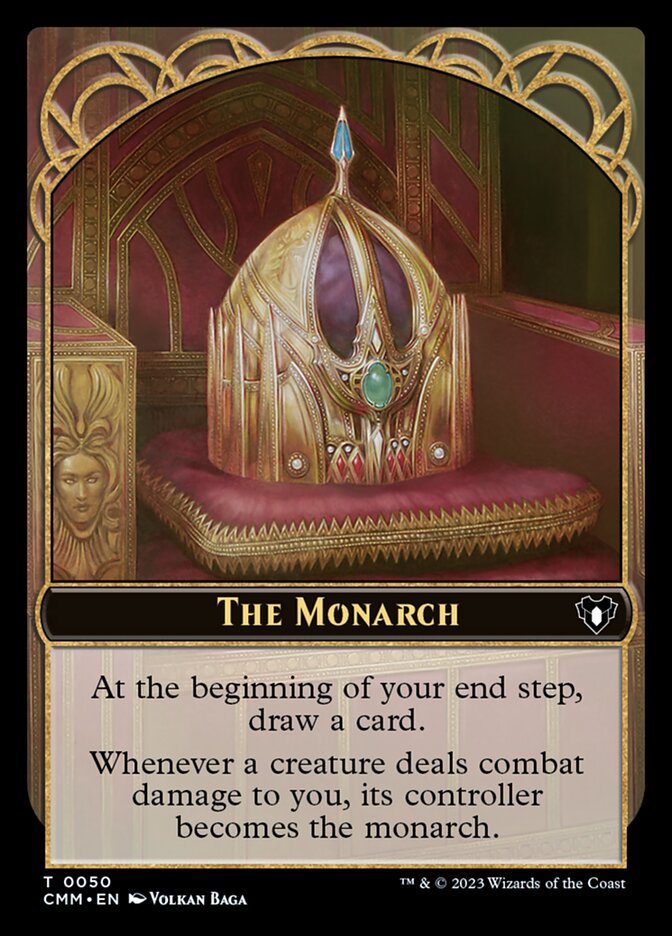
CMM also contains a host of multiplayer specific mechanics. Some of the more common ones are Goad, which forces combat between your opponents; and Monarch, the infamous card drawing hot potato. Here are some other more niche mechanics to look out for, manipulating everything from combat to mana costs to alliances:
- Dethrone
- Join Forces
- Myriad
- Tempting offer
- Undaunted
Archetypes
As usual, there are ten two-color uncommons that represent the ten archetypes in CMM. It’s worth emphasizing that you do not need to draft them in order to play that particular archetype: not only are there additional multicolor Commanders at higher rarities; there are also mono-color Legendary creatures that fit into a given archetype and have implicit Partner; and in a pinch you can always grab a Prismatic Piper (or two).
What does this mean in terms of draft strategy? There is no need to draft an early Commander and force that archetype. Instead - similarly to any other draft set - it’s better to figure out the open archetype based on the cards being passed to you.
White/Blue: Artifacts
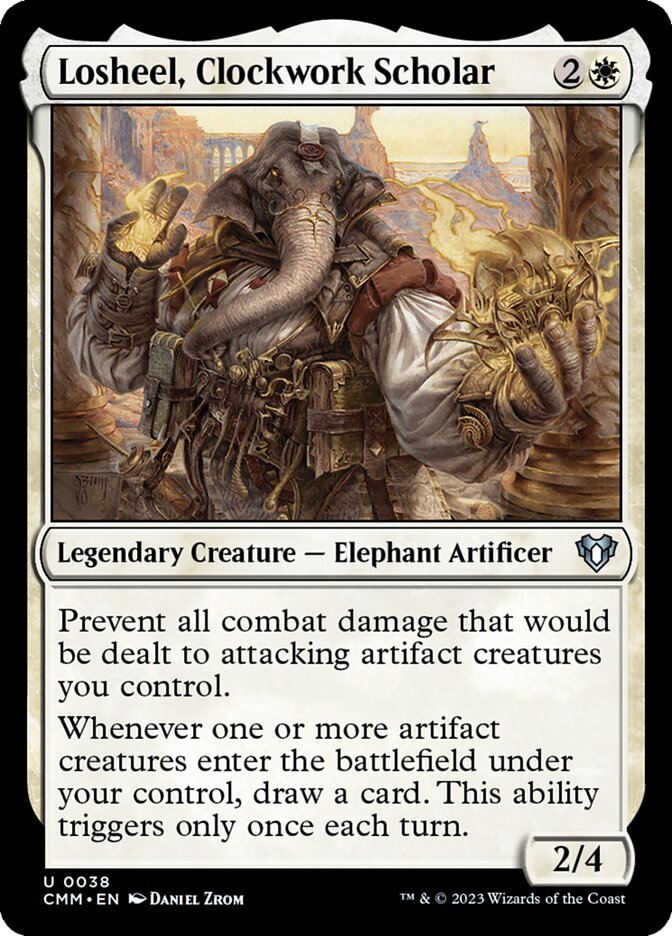
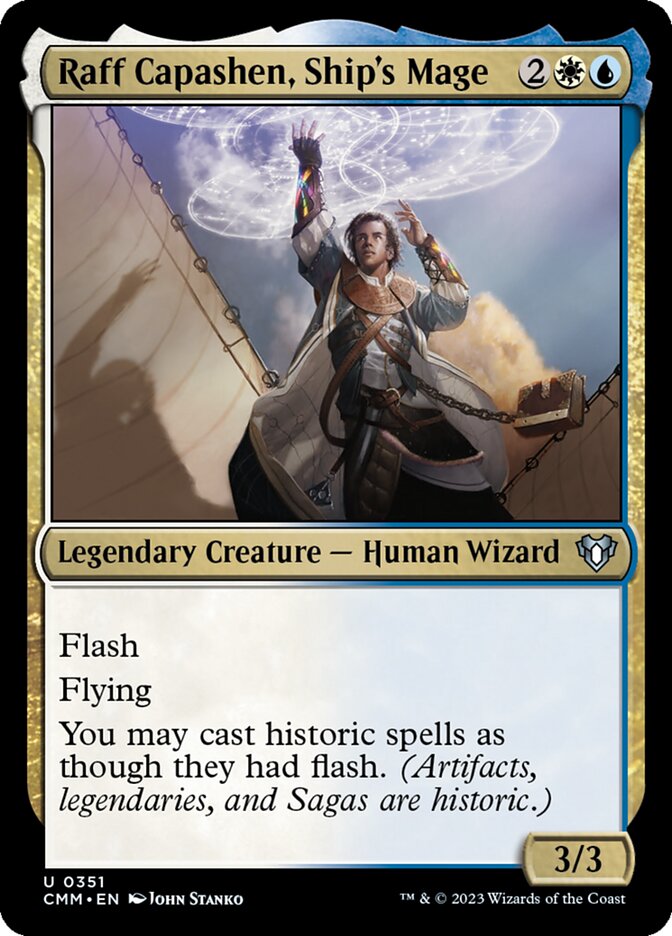
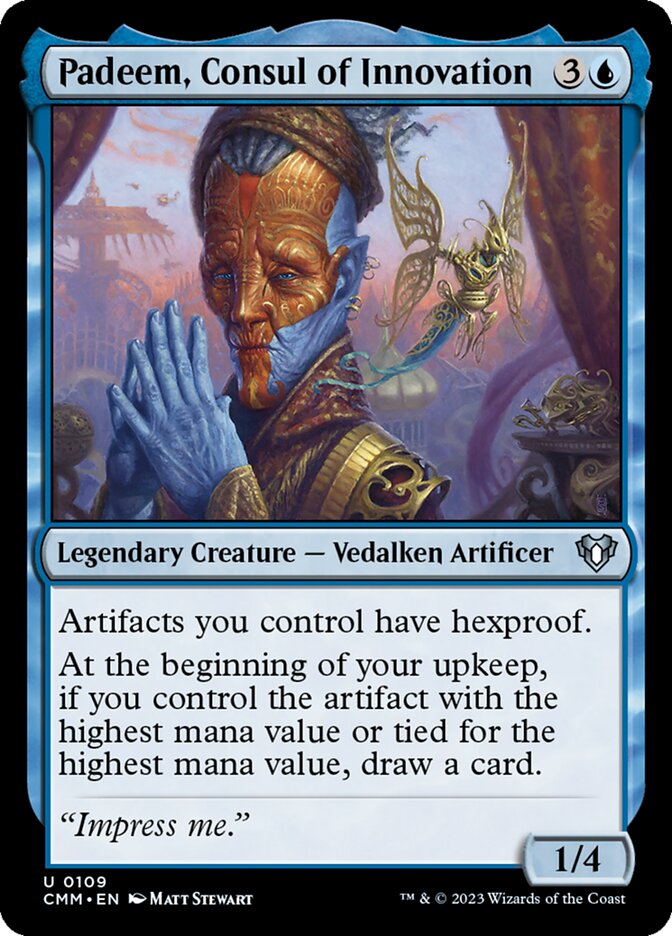
Yes yes, Raff Capashen, Ship’s Mage technically covers more than just artifacts. But there are no Sagas in the draftable portion of CMM, and most decks will have a higher than normal proportion of Legendaries. So what really sticks out here is artifacts, and mono-color Legendaries such as Losheel, Clockwork Scholar and Padeem, Consul of Innovation emphasize that a White/Blue deck really wants to concentrate on that card type. Beyond that, note the flash and card draw and flying, and know that a good CMM White/Blue deck will play like many other Limited White/Blue decks, with instant speed spells and card advantage and evasion.
White/Black: Go-Wide

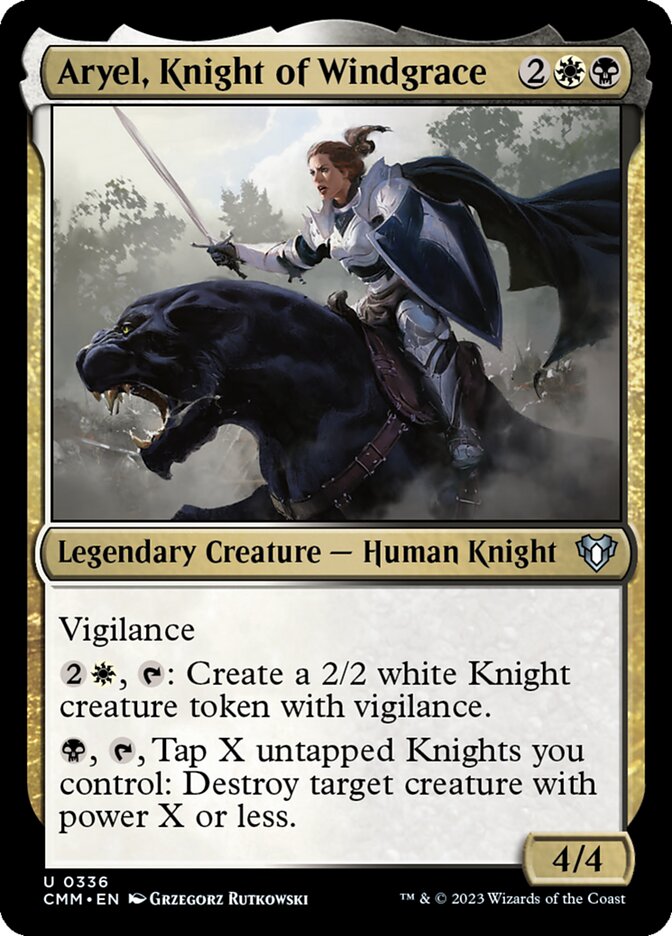
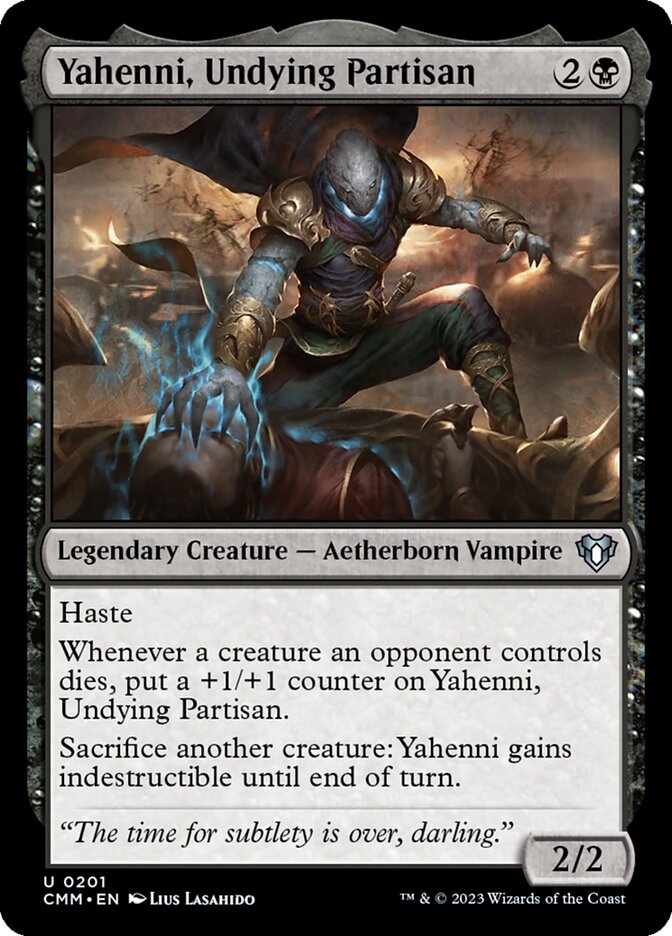
The White/Black archetype is all about maintaining a resilient board presence. Aryel, Knight of Windgrace does so by pumping out tokens which can also be used to slowly grind away your opponents’ creatures. Alharu, Solemn Ritualist takes another tack by buffing your creatures and giving you a consolation prize if your opponent kills your non-token creatures; and Yahenni, Undying Partisan goes yet another way by allowing your creatures to act as a resource to protect the hardy aetherborn. The archetype comes together as a midrange go-wide deck that ekes out advantage and gradually wears your opponents into submission.
Blue/Black: Self-Mill
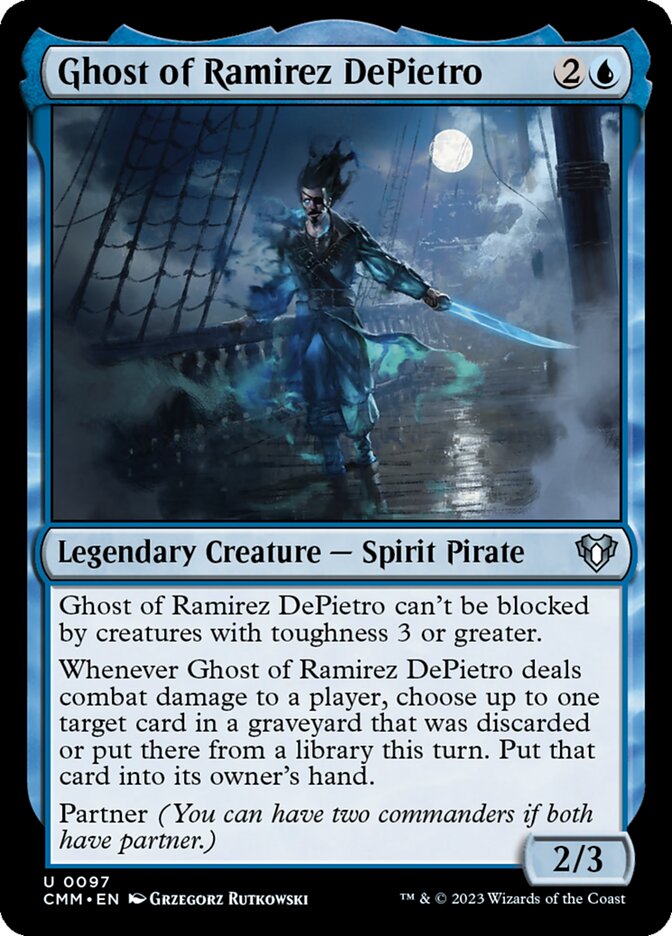
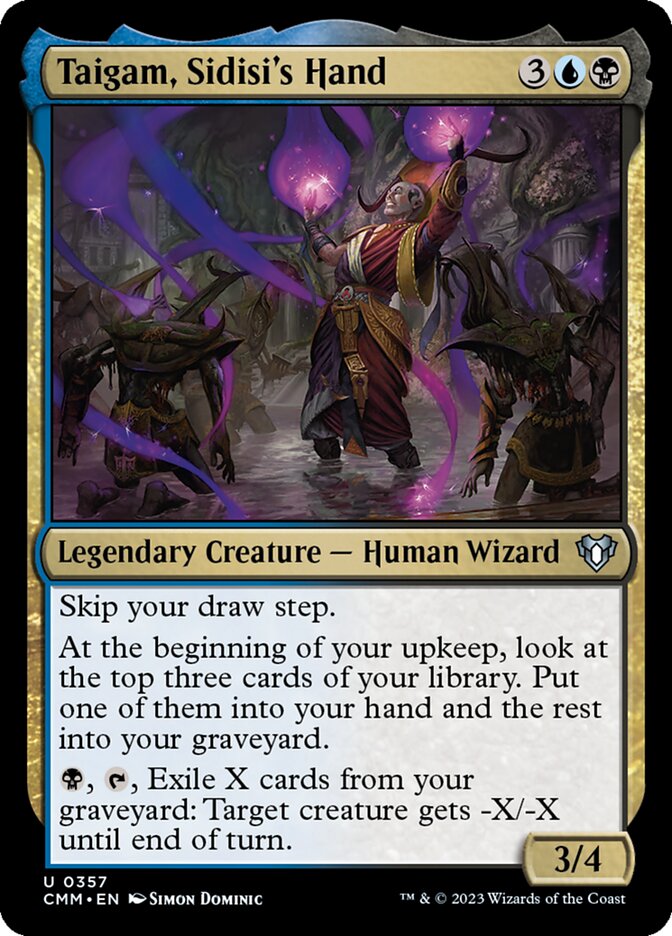
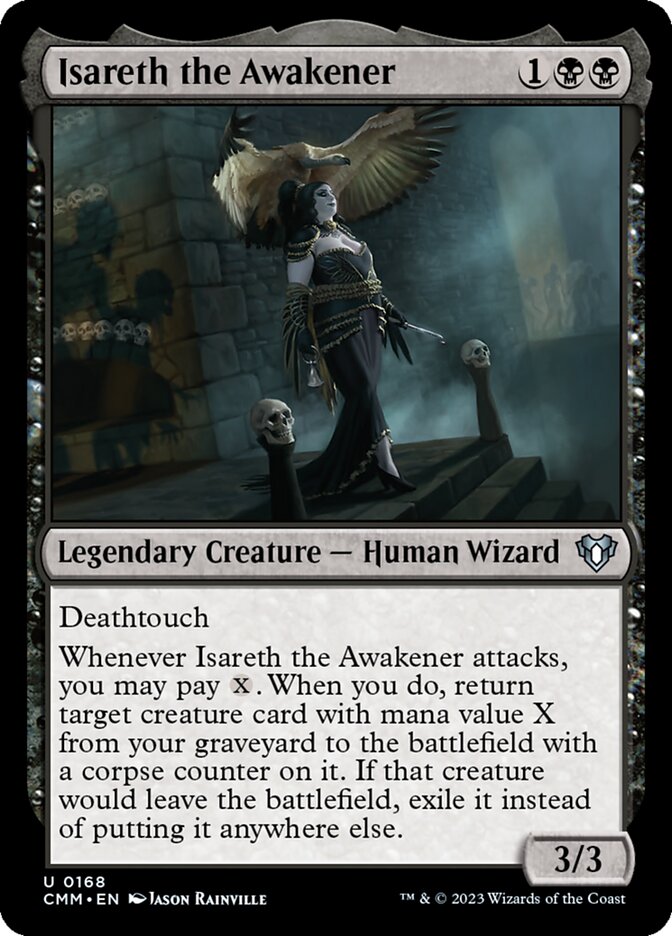
Using your graveyard as a resource is nothing new, but the strategy may be even stronger in long Commander games. Taigam, Sidisi’s Hand is both an enabler and a payoff, throwing cards into your graveyard while providing you with card selection and a way to use the cast-off cards. Ghost of Ramirez DiPietro is far less versatile, but its direct card advantage is nothing to sneeze at. Isareth the Awakener gives you a different way to use your graveyard, and if you’ve been milling yourself then she’ll give you an exciting selection of creatures to bring back. It takes a while for this strategy to get going, but once it does the sheer amount of options that your graveyard gives you makes it hard to stop.
Blue/Red: Instants and Sorceries
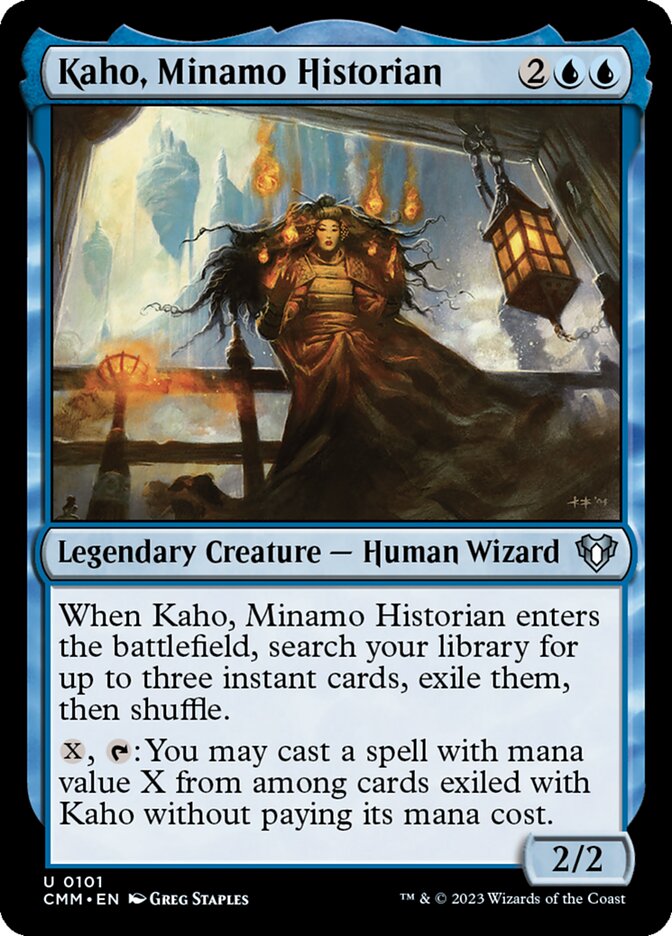
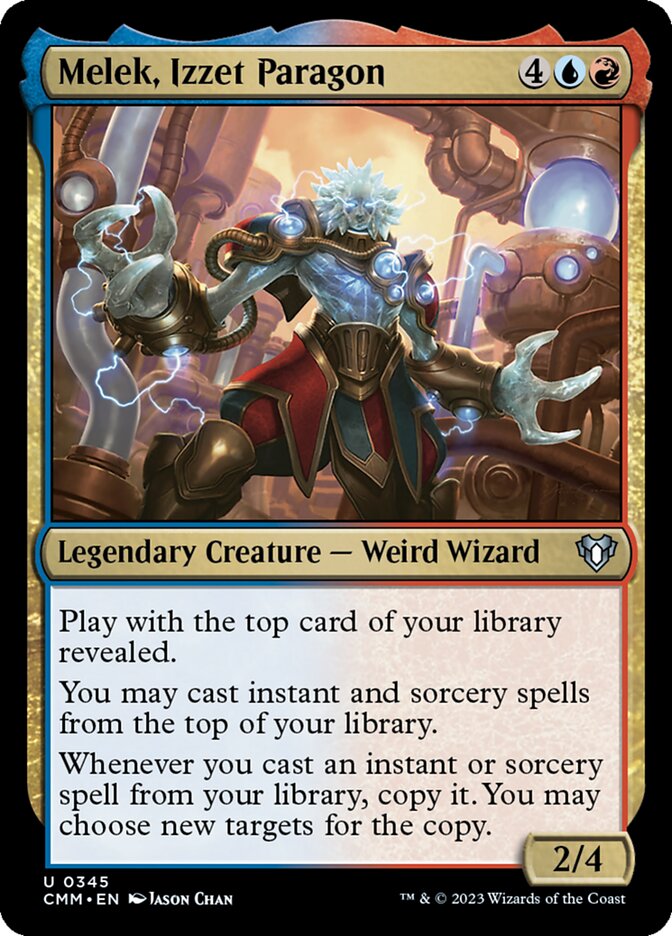
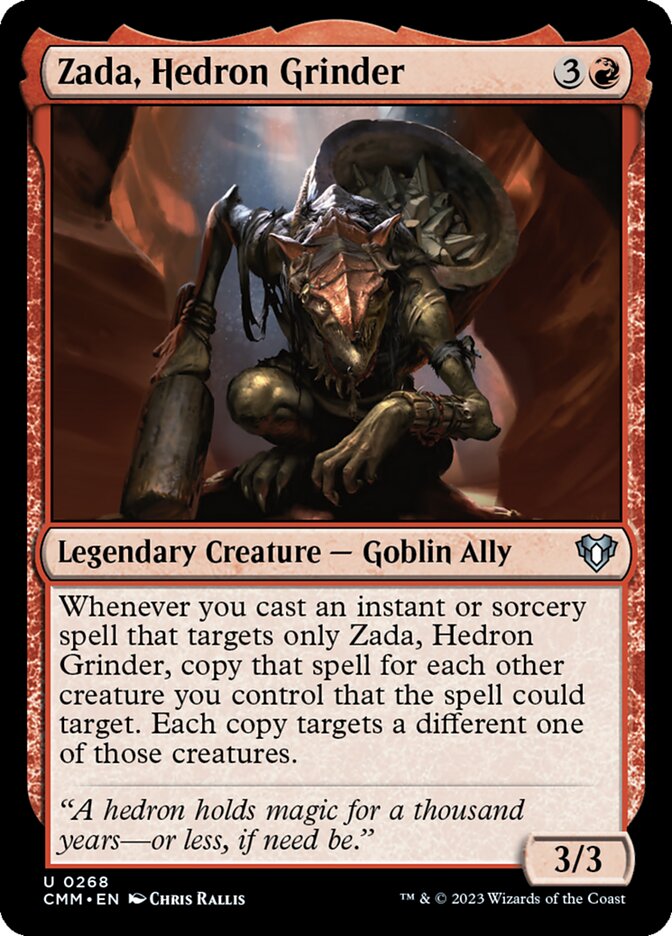
An “instants and sorceries” theme is nothing new for Blue/Red, but that doesn’t mean it’s not a ton of fun. Melek, Izzet Paragon is undeniably the main attraction of this archetype: who doesn’t love copying spells and casting them off the top of the library? Past that, the archetype is actually fairly split in terms of what it’s trying to do. Kaho, Minamo Historian has a slow but powerful ability, and is better suited for a more controlling deck. On the other hand Zada, Hedron Grinder encourages go-wide aggression and fits into a deck that aims to quickly or unexpectedly burn an opponent out.
Black/Red: Aggressive Sacrifice
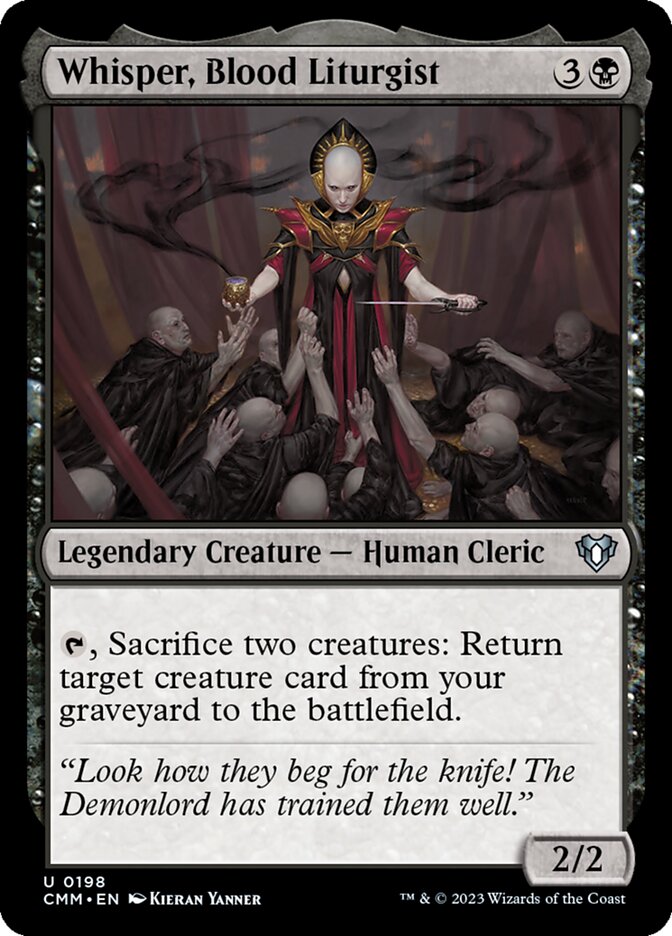
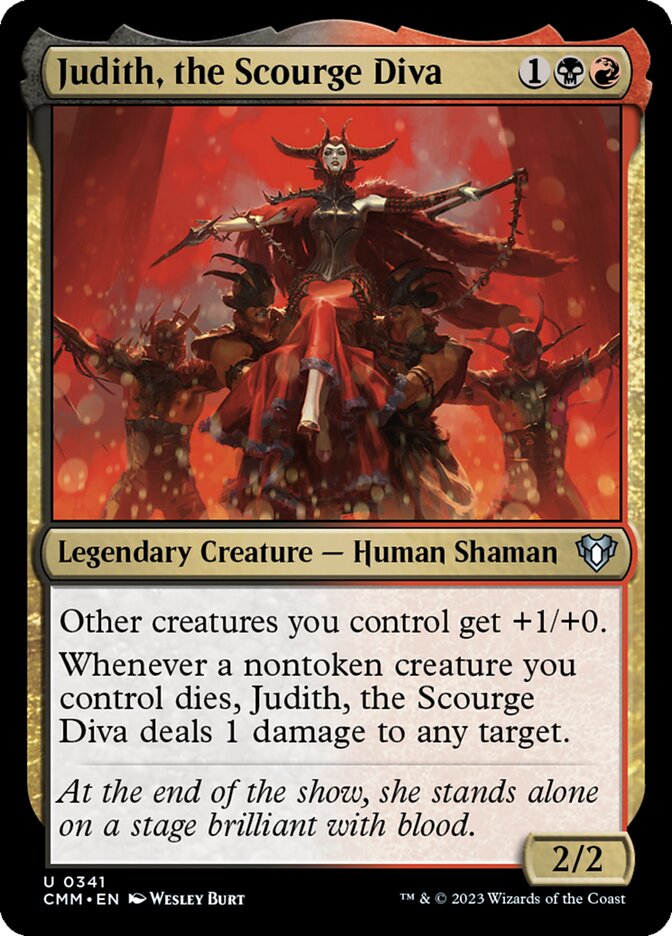
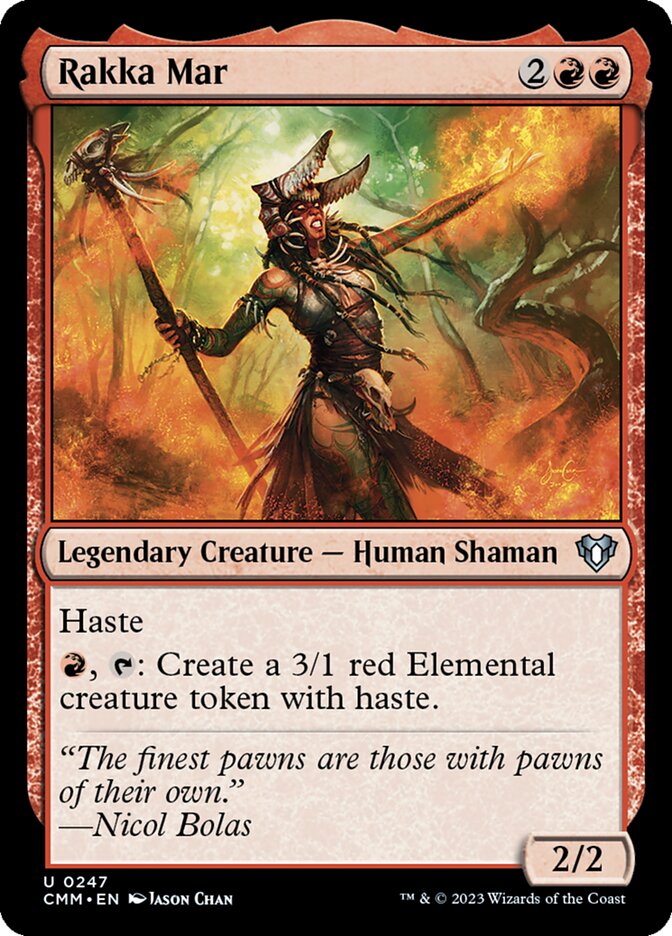
Death is a certainty in multiplayer Magic, so you might as well take advantage of that fact and maybe even help your own creatures into the grave. Judith, the Scourge Diva makes all your creatures - no matter how tiny - into annoying threats, and if anyone kills them then you still get the satisfaction of tossing out a ping of damage. Rakka Mar provides a different kind of benefit in the form of Elemental tokens, which can be used to press the attack - or as fodder for sacrifice effects such as that offered by Whisper, Blood Liturgist. It can be a bit tricky to put the pieces of this deck together, but the payoff is worth it.
Black/Green: Slow Tokens

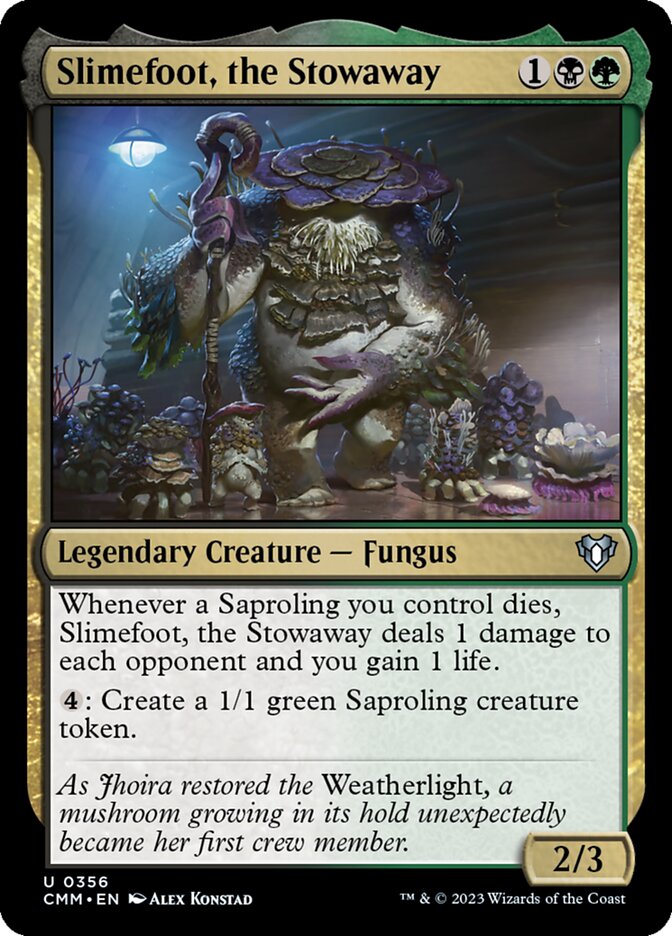

Some go-wide decks aim to overrun the opponent quickly. Some aim to stall the game out, gradually accruing resources until all your incremental board presence becomes too much pressure to bear. That’s what Black/Green wants to do in CMM, and Slimefoot, the Stowaway shows you how: hold up your mana to create blockers that drain your opponents if they die and become quite annoying if they live. Cabal Patriarch lets you cash in these annoying tokens with an annoying debuff that notably can be used in combats you’re not even involved in, allowing you to control the flow of the game. A successful Black/Green deck often just waits and lets its opponents wear themselves out before suddenly swinging in with surprise lethal, and if you have Nemata, Grove Guardian then your army of Saprolings can end the game quite quickly indeed.
Red/White: Equipment
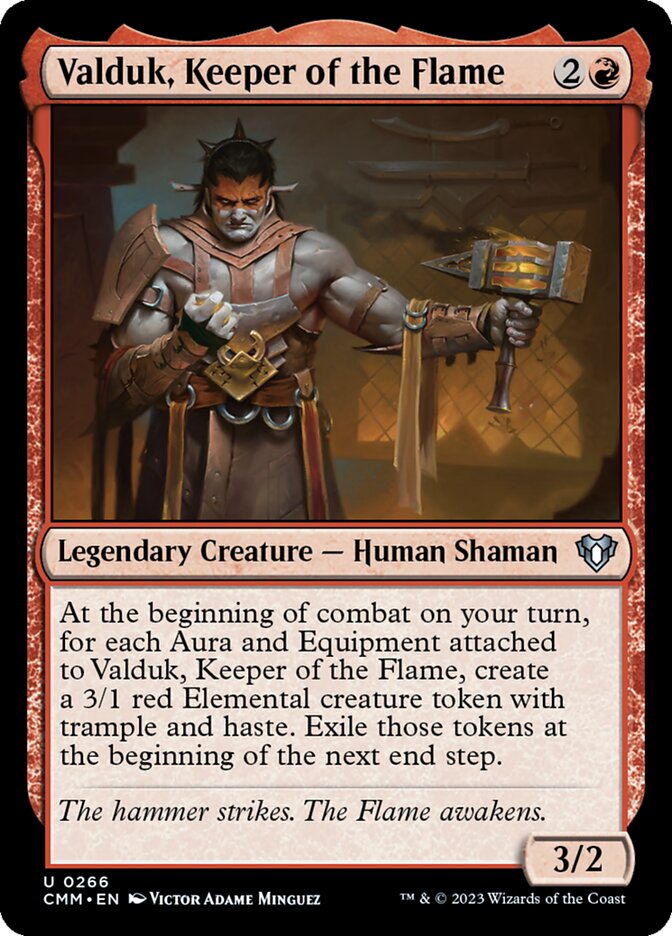
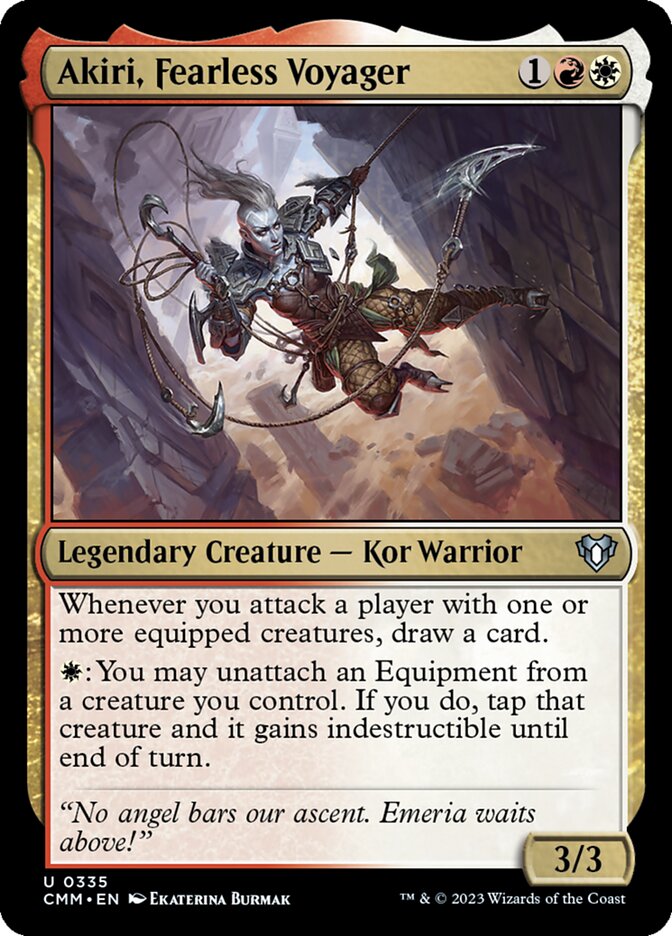
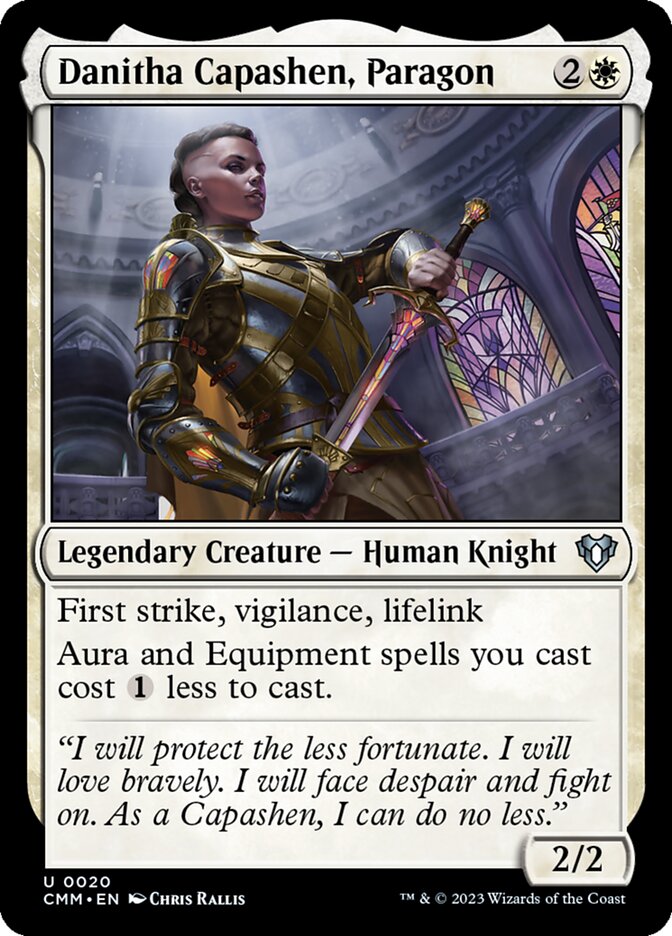
Red/White is typically an aggressive strategy, and aggressive strategies tend not to do great in multiplayer games, as aggro decks are more suited for bashing one opponent rather than several. One solution is to use Equipment, which buffs your smaller creatures into parity (or beyond) - and which stick around if the equipped creature dies. Akiri, Fearless Voyager further enhances the reach of this strategy with card draw and an indestructibility trick that makes your creatures even harder to stop. Valduk, Keeper of the Flame and Danitha Capashen, Paragon focuses your strategy in additional directions, with the former allowing you to go quite wide and the latter allowing you to grow quite tall. Perhaps this strategy can’t afford to go quite as all-out aggressive as in a one-versus-one game, but it can definitely provide a constant threat to keep everyone on their toes.
Red/Green: Power Matters
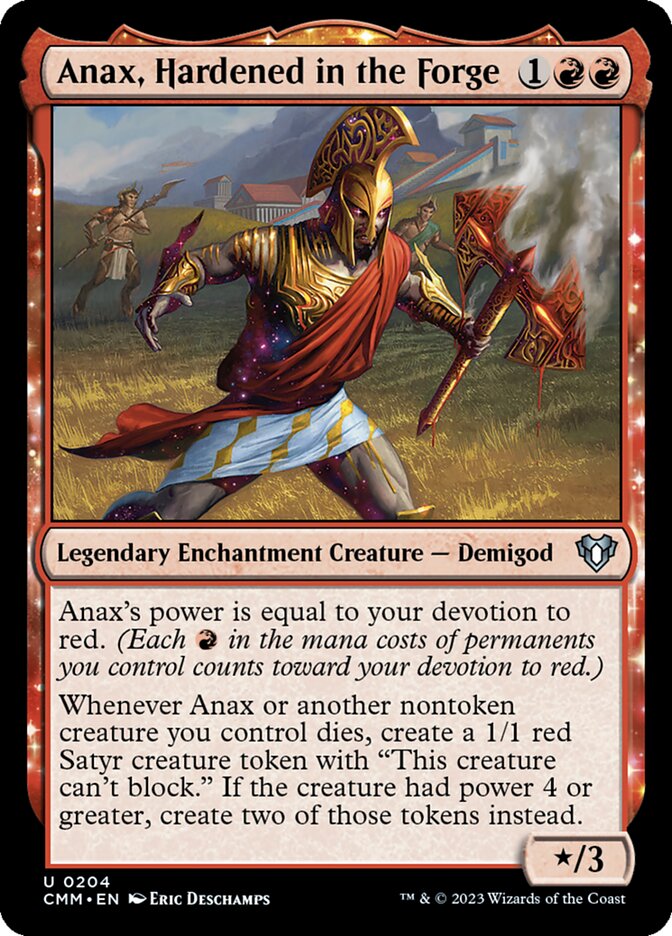
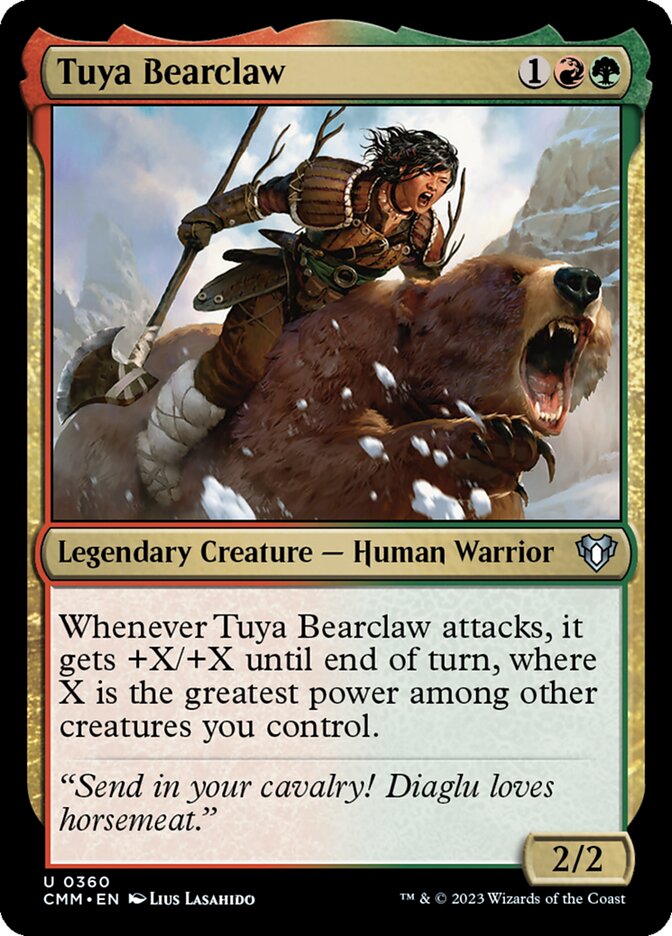

Of course power matters, but that fact can often be lost amidst a sea of removal and control effects. Regardless, sometimes the best way to win is to simply smash with a massive fist, and that’s what Red/Green gives you in CMM. Tuya Bearclaw is a nice cheap Commander that comes out early while constantly scaling upwards as you play stronger and stronger creatures. Goreclaw, Terror of Qal Sisma adds in cost reduction and a nutty buff that turns an unchecked attack into something that is likely fatal. Anax, Hardened in the Forge provides an alternative form of reach by ensuring that your creatures leave something behind if they die.
Green/White: +1/+1 Counters
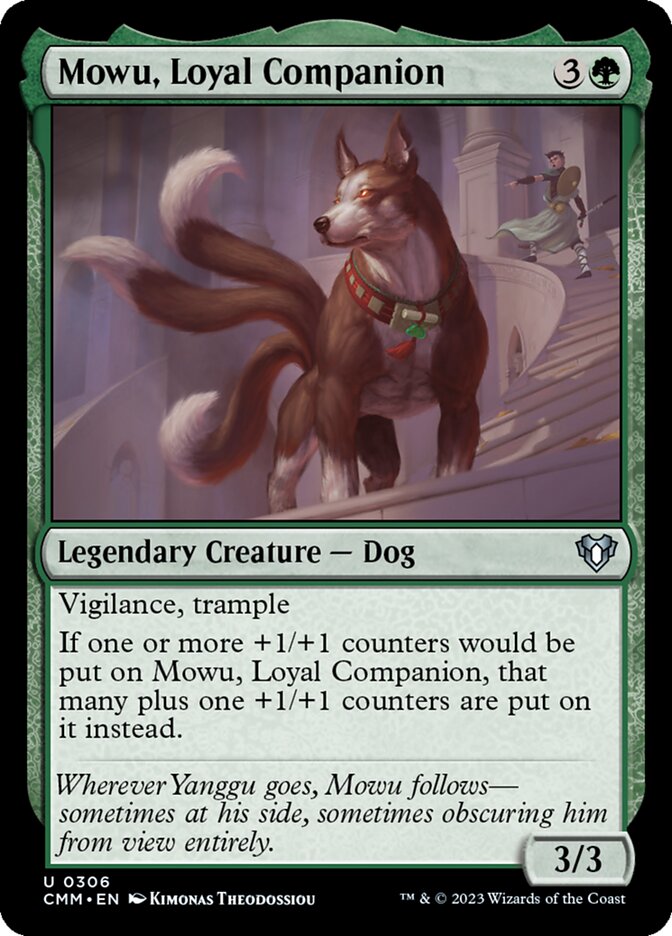
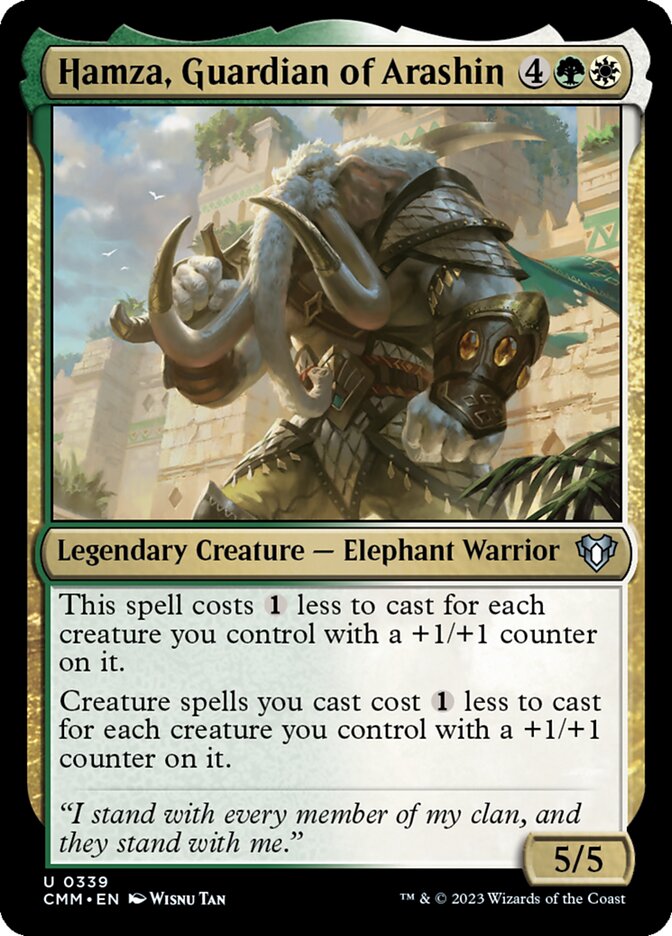
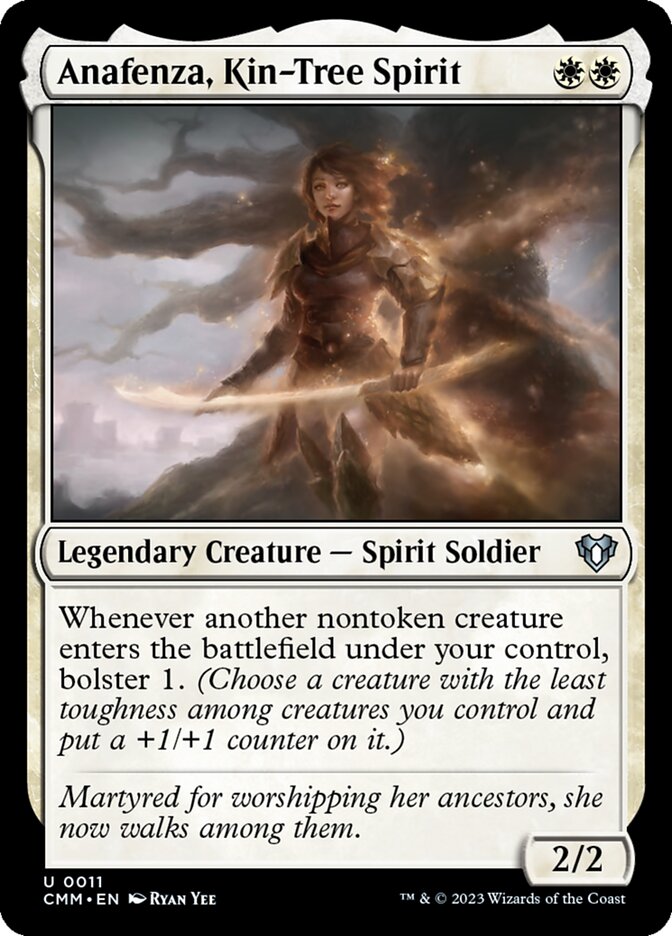
+1/+1 counters are a mainstay of Magic, and it’s easy to understand why: it’s just so satisfying to watch your creatures grow and grow and grow. If you have a few creatures with +1/+1 counters, Hamza, Guardian of Arashin becomes an excessively cheap threat that also lets you dump other creatures out onto the battlefield way ahead of curve. Anafenza, Kin-Tree Spirit is a great way to get those counters on in the first place, and Mowu, Loyal Companion increases those counters to a radical degree. There’s nothing subtle about this kind of strategy, but there doesn’t need to be: just play your creatures, watch them grow, and win.
Green/Blue: Ramp

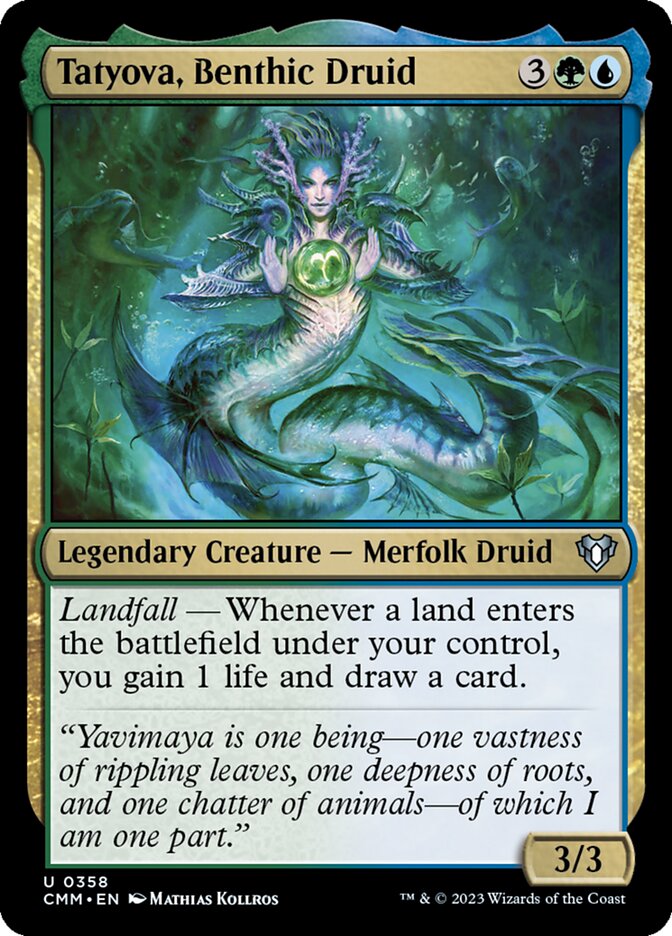
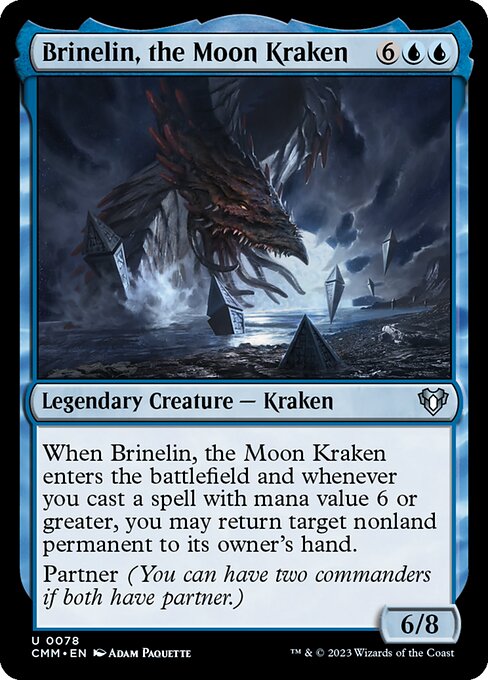
Tatyova, Benthic Druid returns to further terrorize players with her overwhelming card advantage: watching your opponent draw card after card after card simply for playing lands is incredibly demoralizing. If that’s not enough reason to embrace the Green/Blue strategy, there’s also cards such as Molimo, Maro-Sorceror who simply becomes a massive threat that likely outscales everything else on the battlefield. Brinelin, the Moon Kraken can also be useful in a ramp deck by upgrading all your expensive spells with a bounce effect. It can be terrifying to “waste” your first few turns with mana ramp. But the long-term payoff can be well worth it.
Mana Fixing Ramp
You’re less likely to need sustained mana fixing in CMM, as you’ll be unable to vicariously splash cards that fall outside of your Commander(s)’ color identity. What you will often want is mana ramp: a way to quickly play expensive and powerful cards that give you an edge before other players can catch up. Many of these cards would typically be too slow for a Limited game, where taking a turn off to ramp can be fatal. However that’s far less of a risk in a multiplayer game, where opponents are more likely to hold back early for fear of being attacked back by others.
There are a lot - a lot - of these colorless mana rocks in the set:
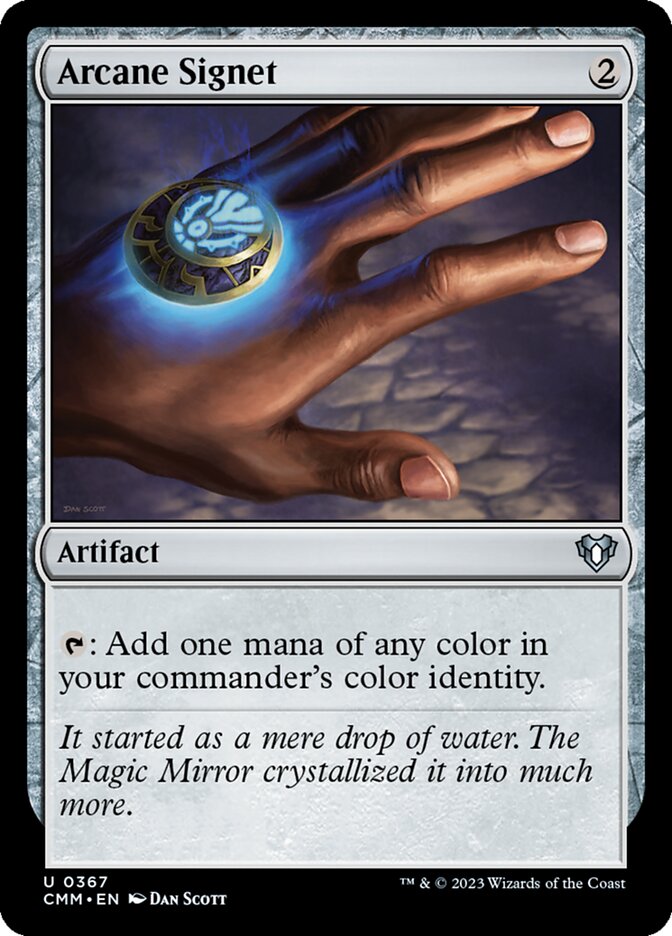

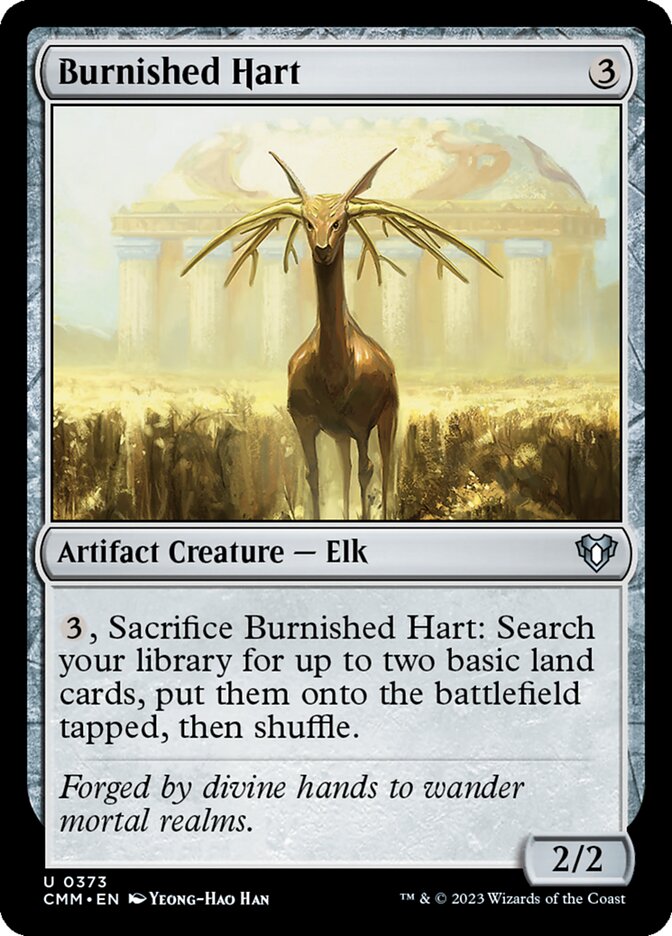
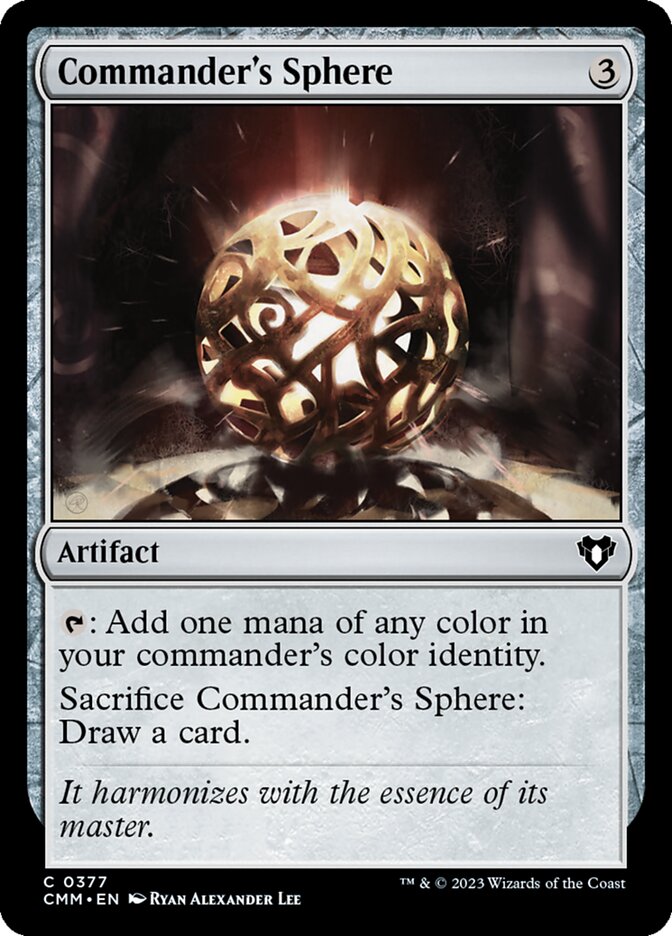

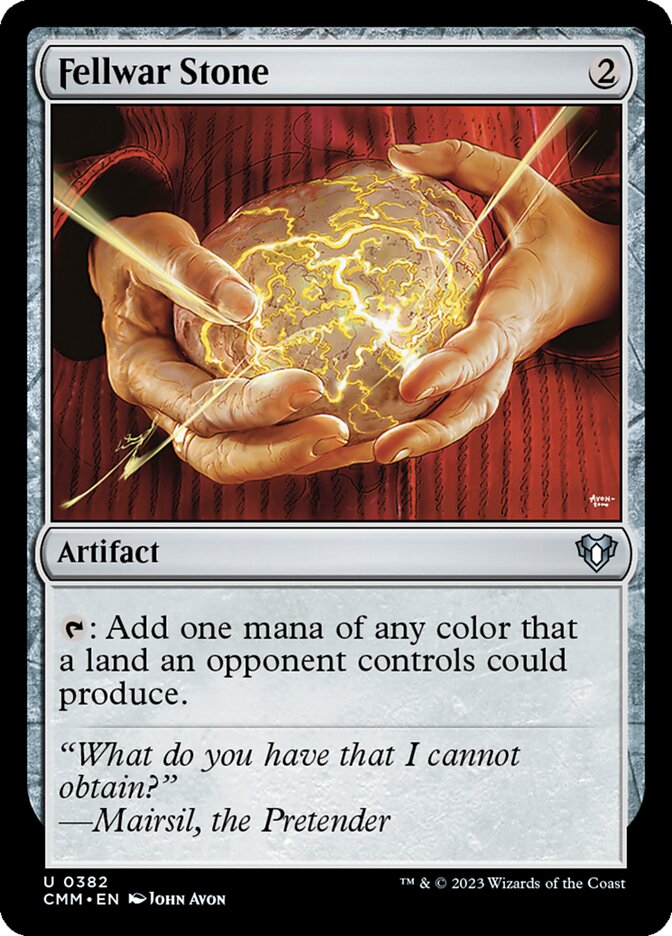
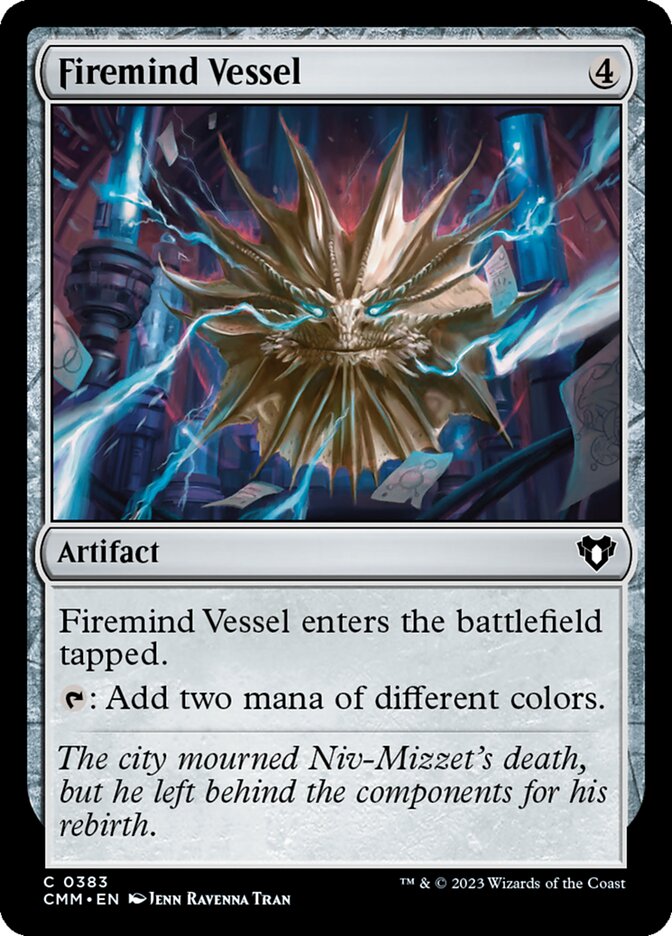

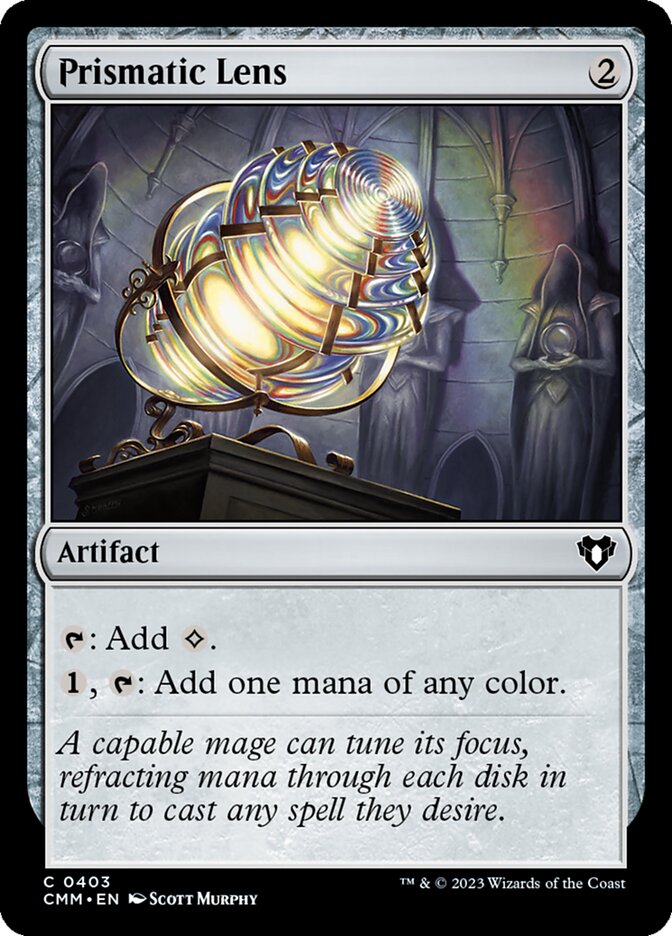
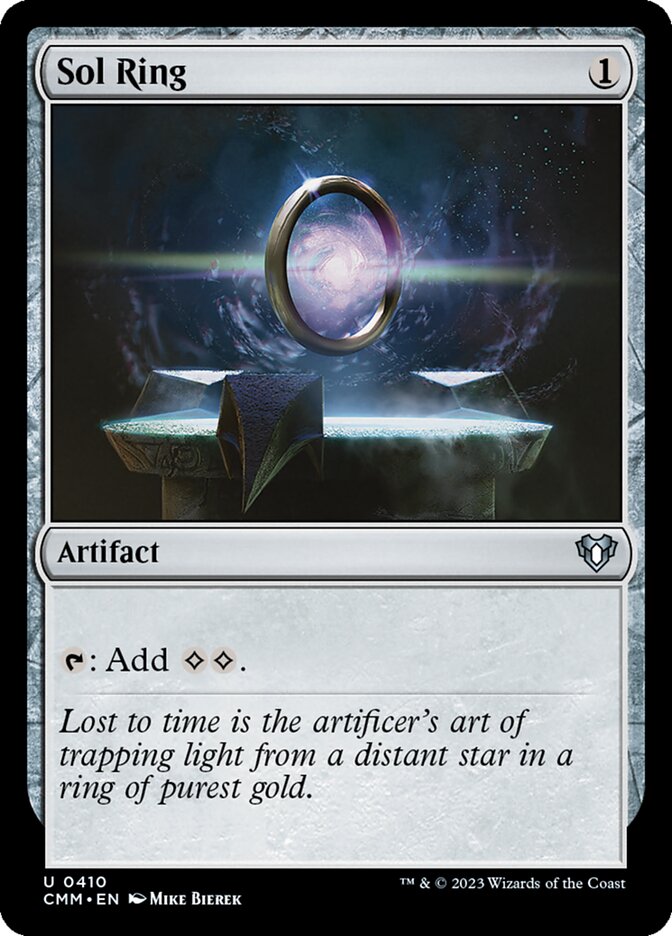
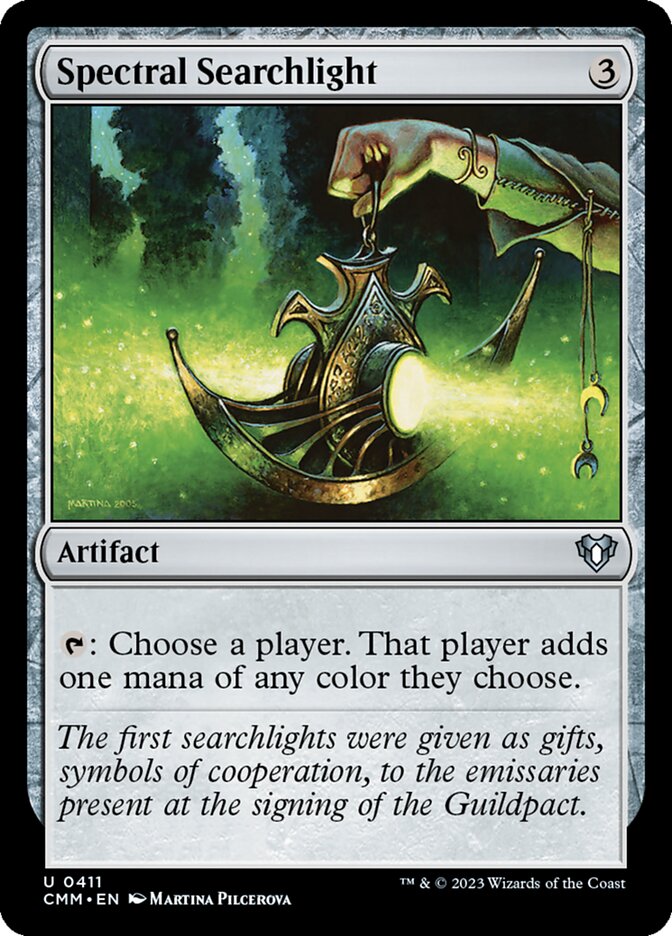


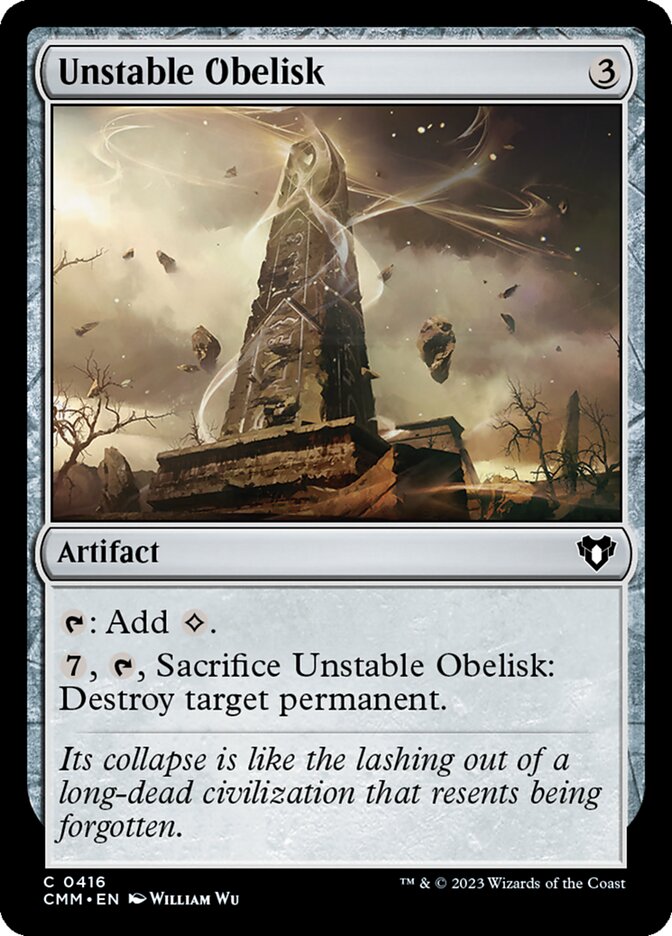
Green has additional options at common and uncommon:
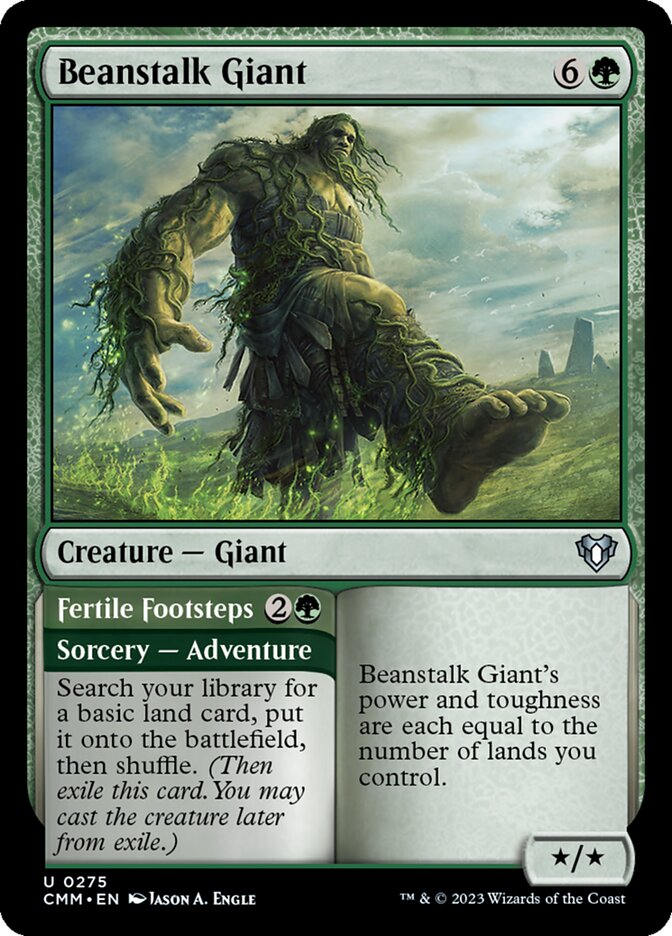


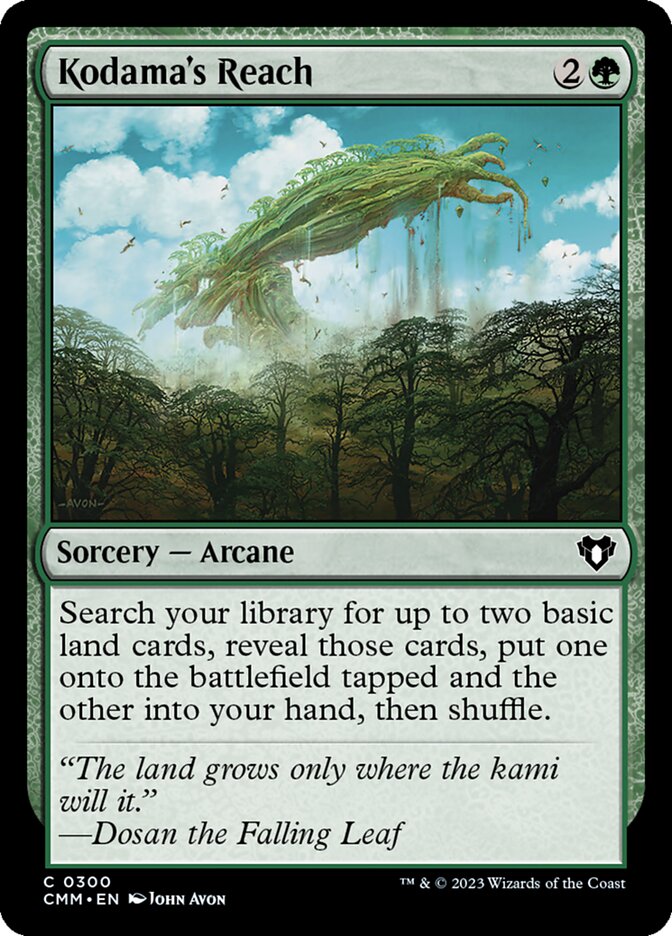
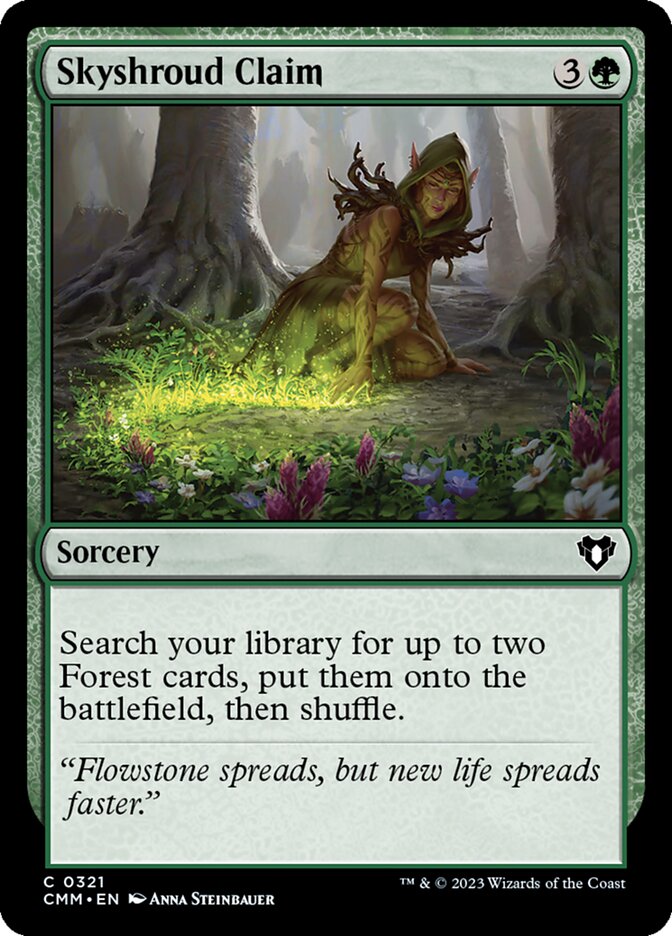
Key Commons and Uncommons
White
Creatures:
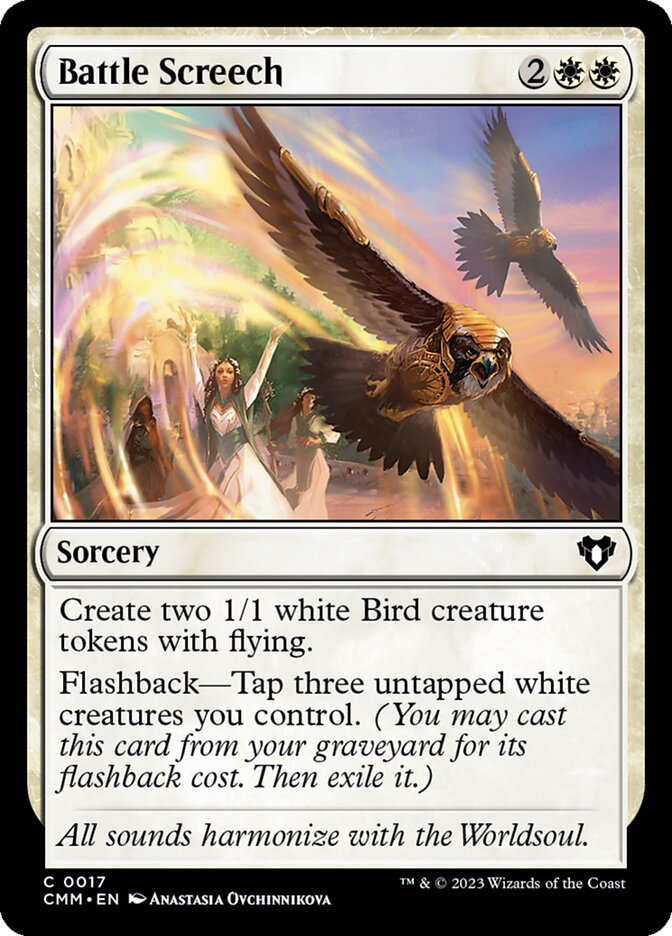
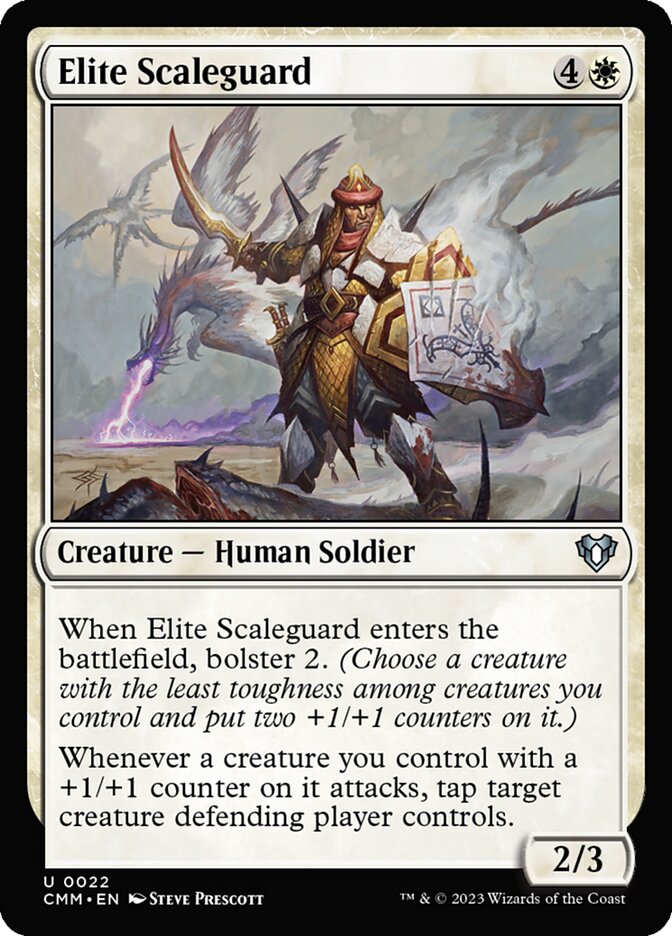
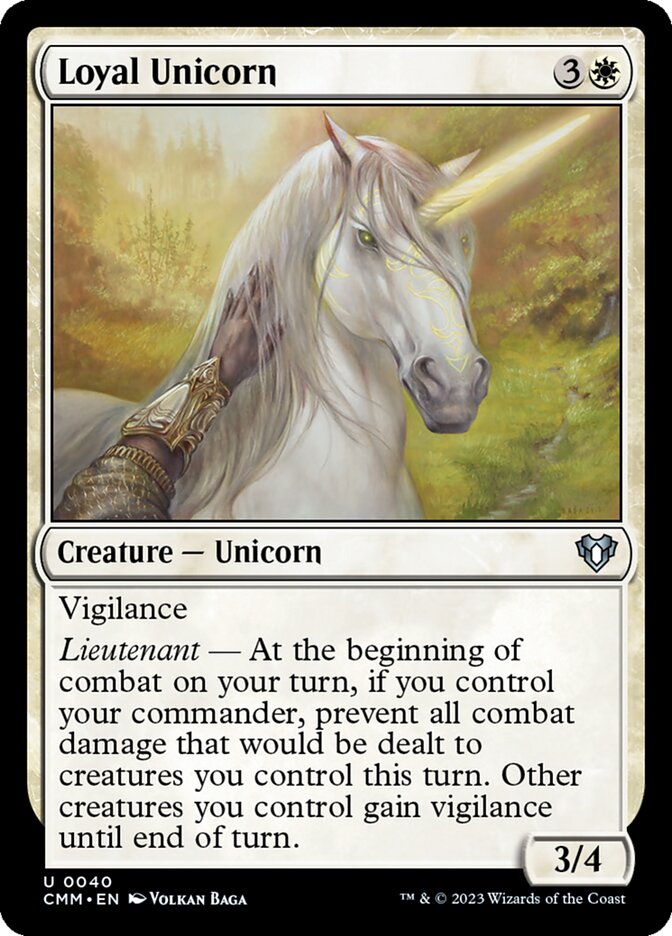
- Battle Screech: I mean, it’s technically not a creature. But it does represent four evasive 1/1s for a single card and a reasonable price.
- Elite Scaleguard: Not only does this creature buff up your board, it also makes it difficult for your opponent to block well. That’s a pretty good combination.
- Loyal Unicorn: Want to make your attacks untenable for your opponent? This creature (plus a Commander) is how.
Non-Creatures:


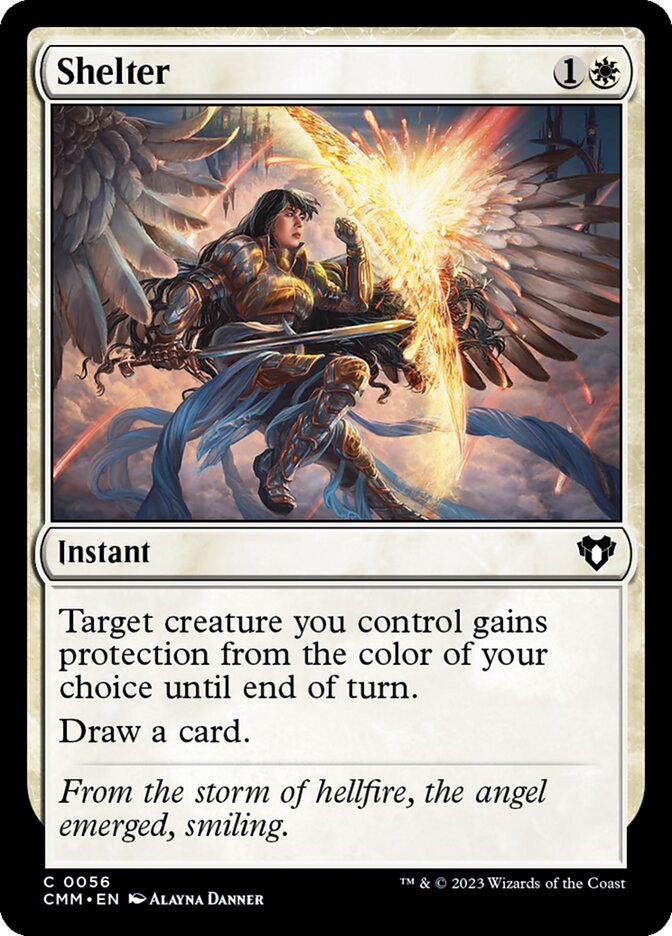
- Kirtar’s Wrath: Hey look, a board wipe at uncommon! Punish your opponents for over-extending while hoarding cards in your hand - that’s a perfect recipe for victory.
- Path to Exile: The classic returns, and although this spell may have fallen out of favor in Modern, it’s still extremely powerful in Limited environments. Sure, it also ramps your opponent, but that’s a small price to pay for being able to remove any threatening creature at instant speed for the low price of a single White mana.
- Shelter: Protection spells are especially good in a format where you may have a creature that is key to your entire plan. And with the additional “draw a card” effect, this card will often act as a two-for-one.
Blue
Creatures:


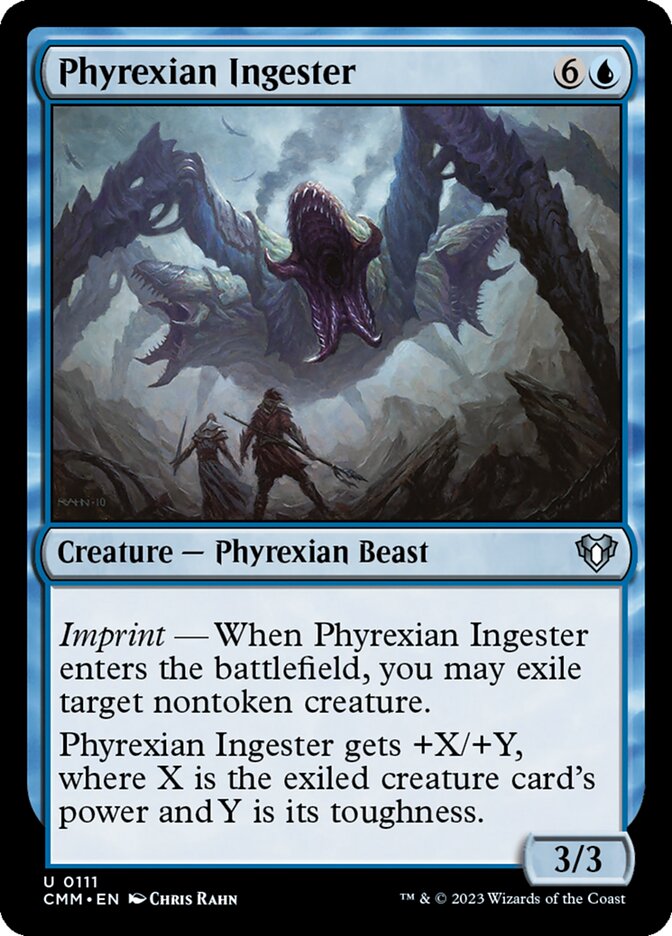
- Body Double: I guess it’s bad if players have only been killing bad creatures, but how likely is that? Also great if you can self-mill.
- Loyal Drake: Draw an extra card a turn for the low low price of having a Commander in play.
- Phyrexian Ingester: Seven mana is a lot, but indiscriminate removal for (almost) any creature is worth it. And it’s even better in a set with ramp and reanimation and blink.
Non-Creatures:

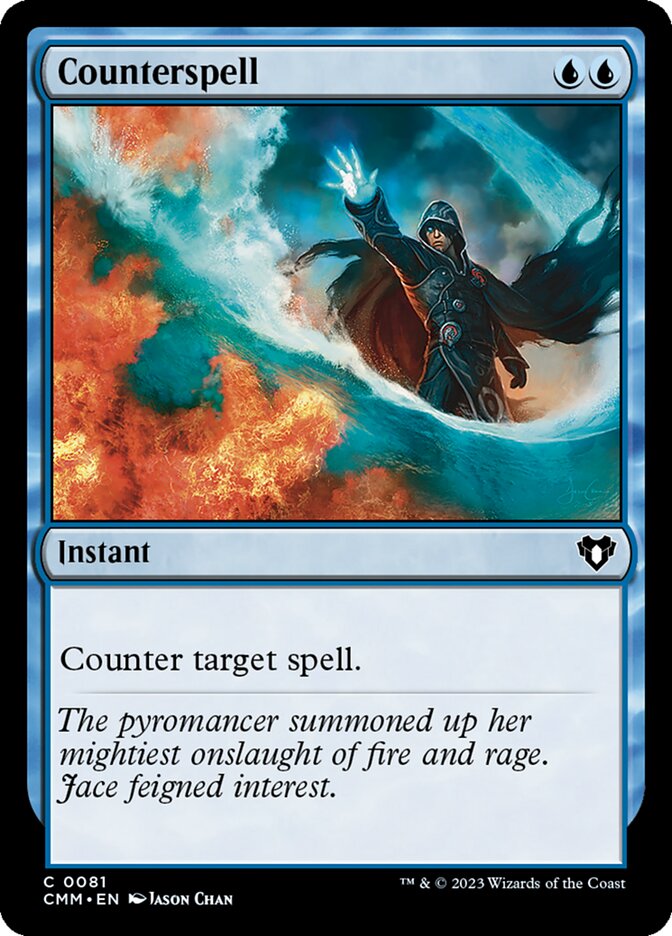
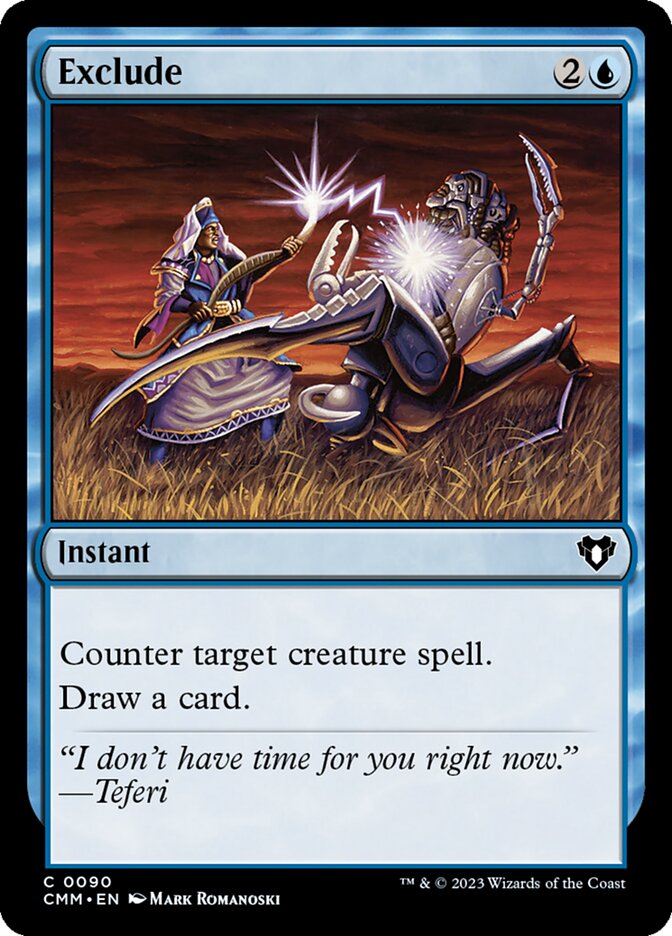
- Aether Gale: Simply put: if you cast this spell, then an opponent will almost definitely be knocked out of the game.
- Counterspell: It’s a classic for a reason. When this spell is in a format, there’s nothing more comforting (or frustrating) than two open blue mana.
- Exclude: Opponents will definitely be playing creatures, meaning this two-for-one counterspell will almost always be live.
Black
Creatures:
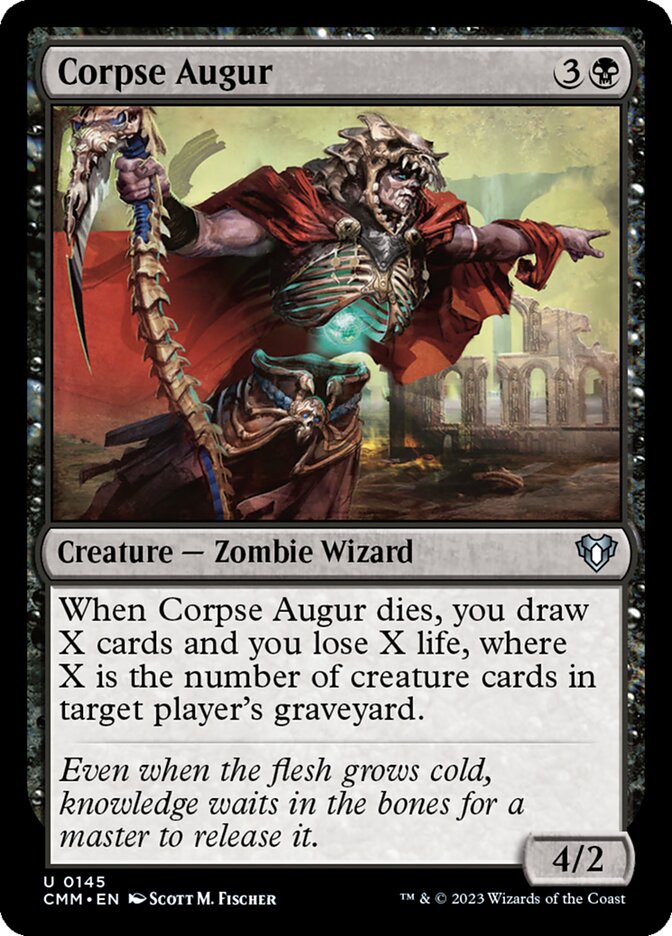

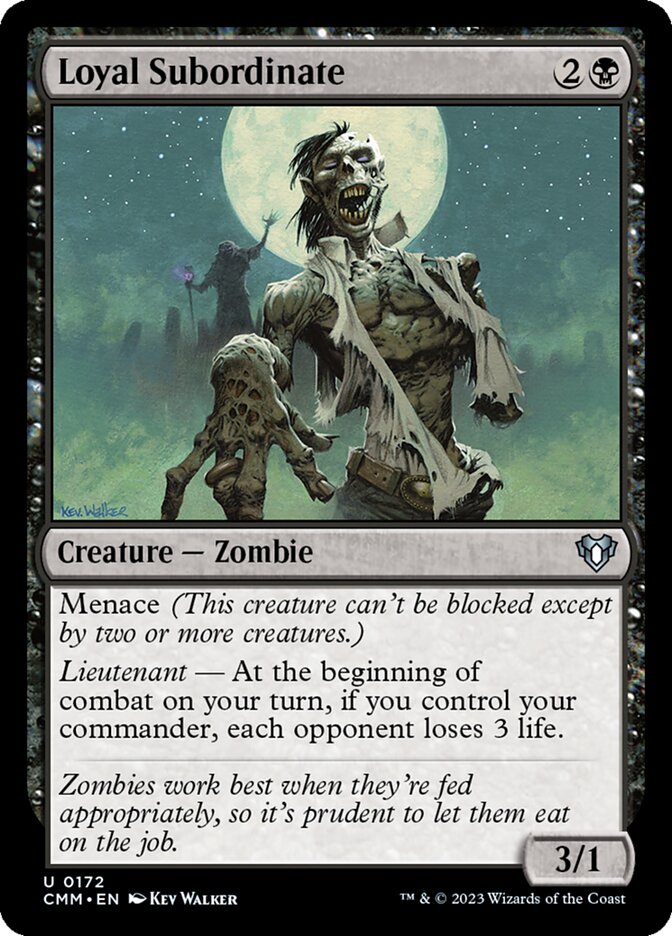
- Corpse Augur: I mean, sure, I guess it’s possible that this creature will literally be the first to die in a game and end up drawing you no cards. But it seems far more likely that it’ll draw you multiple cards and give you insane card advantage.
- Gonti, Lord of Luxury: This creature was insanely good back in Kaladesh, as might be expected for a four mana 2/3 with Deathtouch that also does something slightly better than drawing a card. I expect it to be insanely good in CMM as well.
- Loyal Subordinate: In a four player game this creature represents nine non-combat damage per turn!
Non-Creatures:
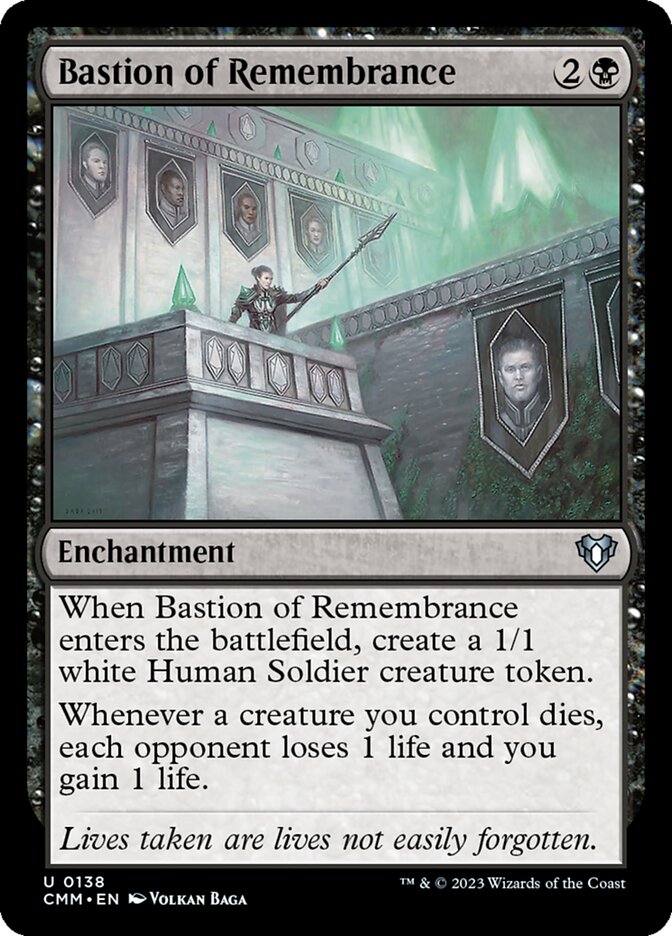
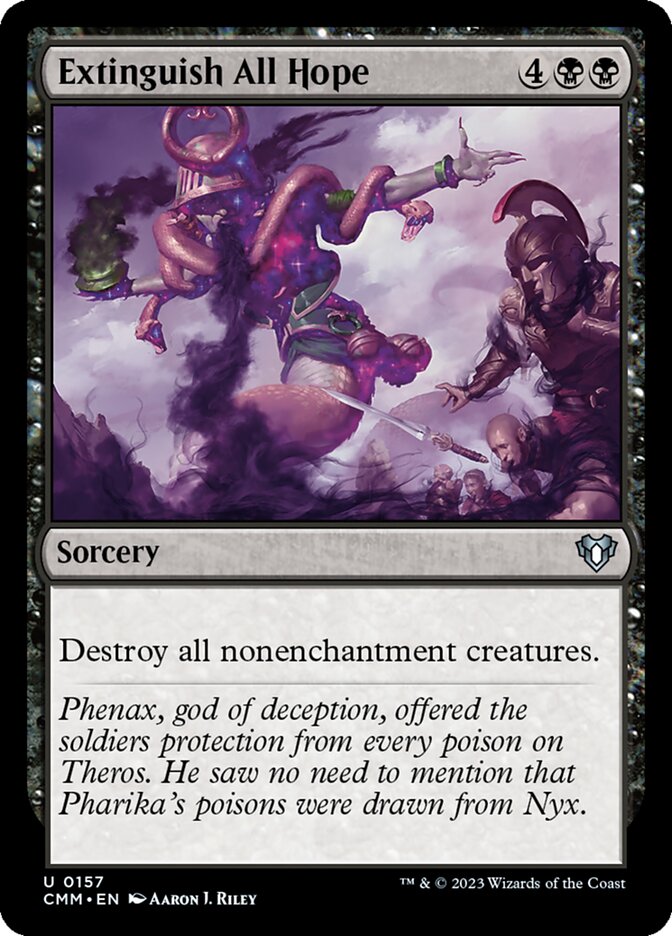
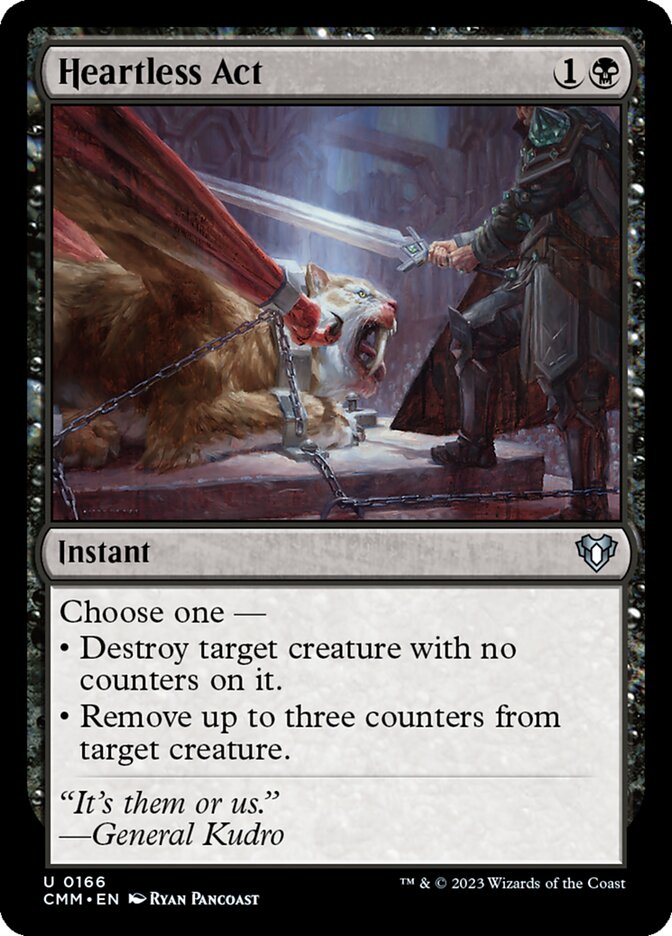
- Bastion of Remembrance: This deceptively innocuous enchantment will be the lynchpin of many strategies and end up winning many games.
- Extinguish All Hope: I’m pretty sure there are no enchantment creatures in CMM, so revel in this card as an unconditional board wipe.
- Heartless Act: Sometimes it’s nice just to be able to kill a thing, you know?
Red
Creatures:
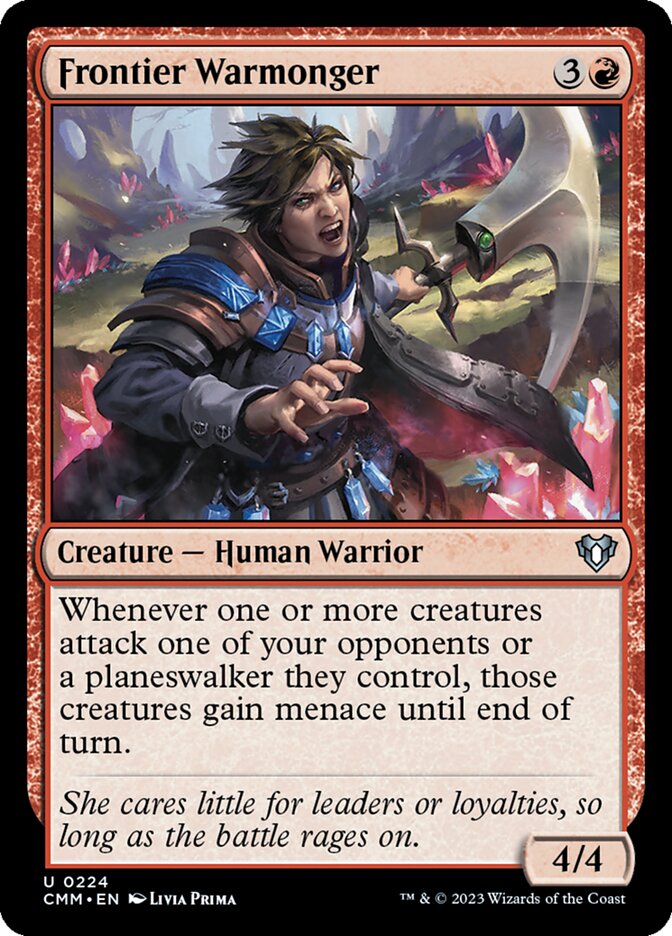
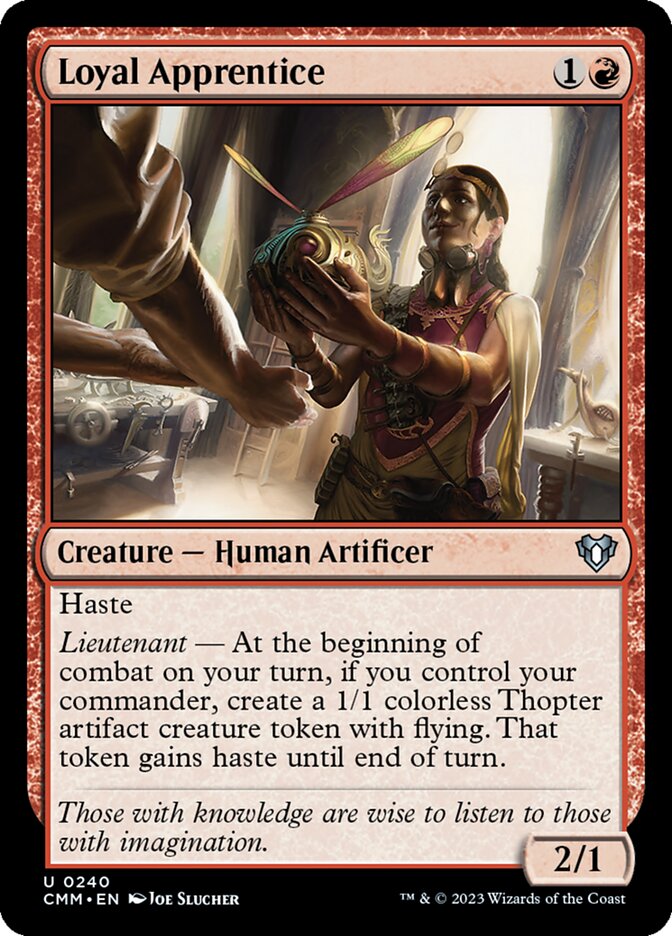

- Frontier Warmonger: Great for any archetype that likes attacking, and if Red is involved that means all of them.
- Loyal Apprentice: A two drop that provides this much value feels too good to be true.
- Skyline Despot: If you play this creature then you’re almost definitely going to become the priority target for everyone else. But if you can defend your monarchy for even one turn, then you’re well on the way to winning the game.
Non-Creatures:


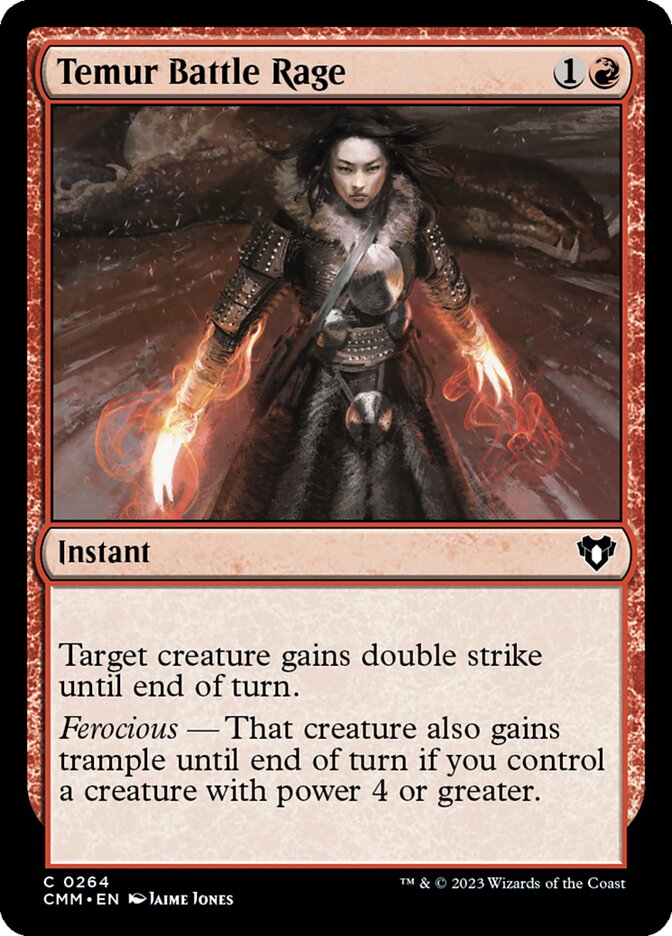
- Furious Rise: It’s not quite an extra card each turn - in Red no less! - but it’s close.
- Ravaging Blaze: Red has a surprising lack of targeted removal in CMM, and this may be the best of a bad bunch.
- Temur Battle Rage: This card ends games in both Limited and Constructed, and I have no doubt it will end games in Commander as well.
Green
Creatures:
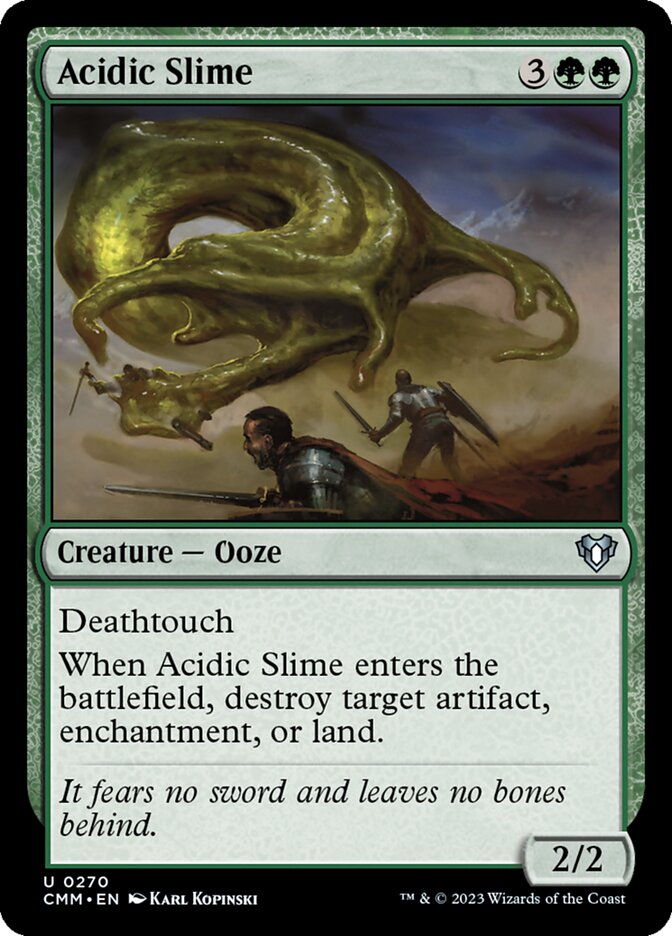
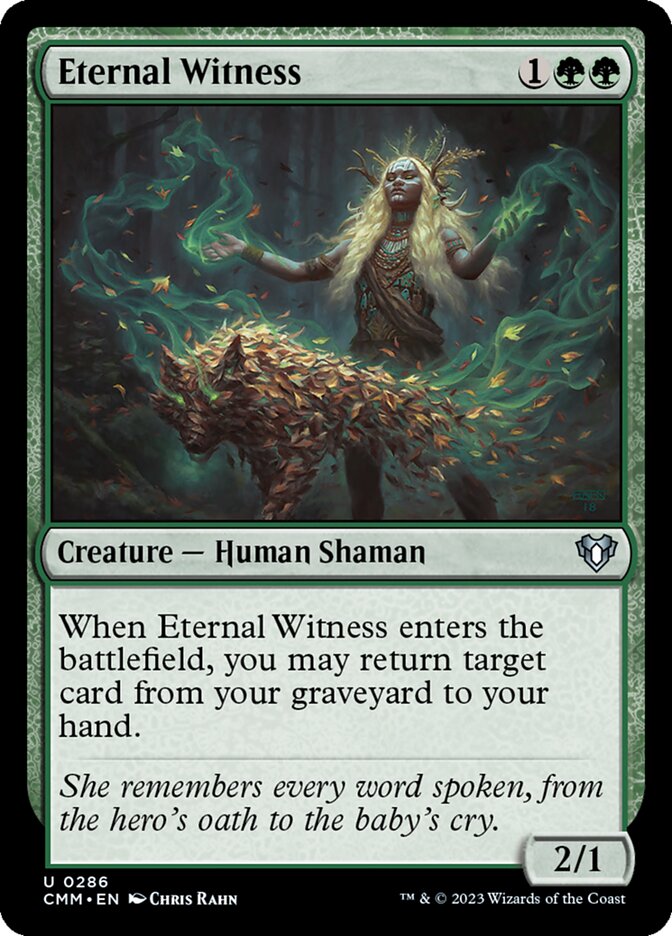

- Acidic Slime: This destroys a variety of permanents that are typically difficult to destroy, and leaves behind a body that no opponent will want to attack into.
- Eternal Witness: There’s nothing quite so gratifying as watching the light dim from your opponents’ eyes after you retrieve a powerful spell or creature that they just killed.
- Loyal Guardian: Putting a +1/+1 counter on one of your creatures each turn is pretty… wait it’s on all of your creatures?!?
Non-Creatures:
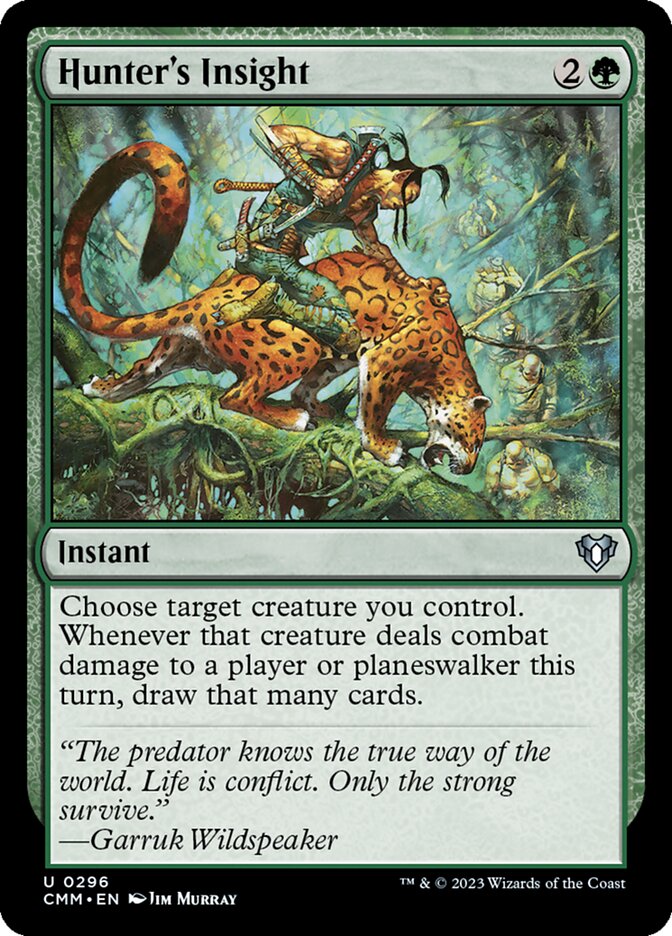
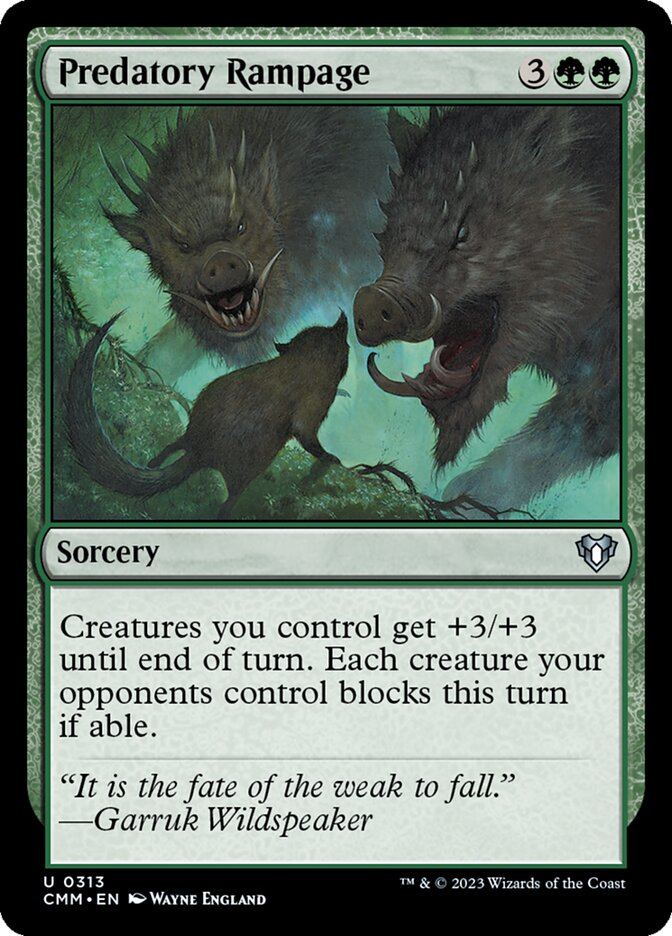
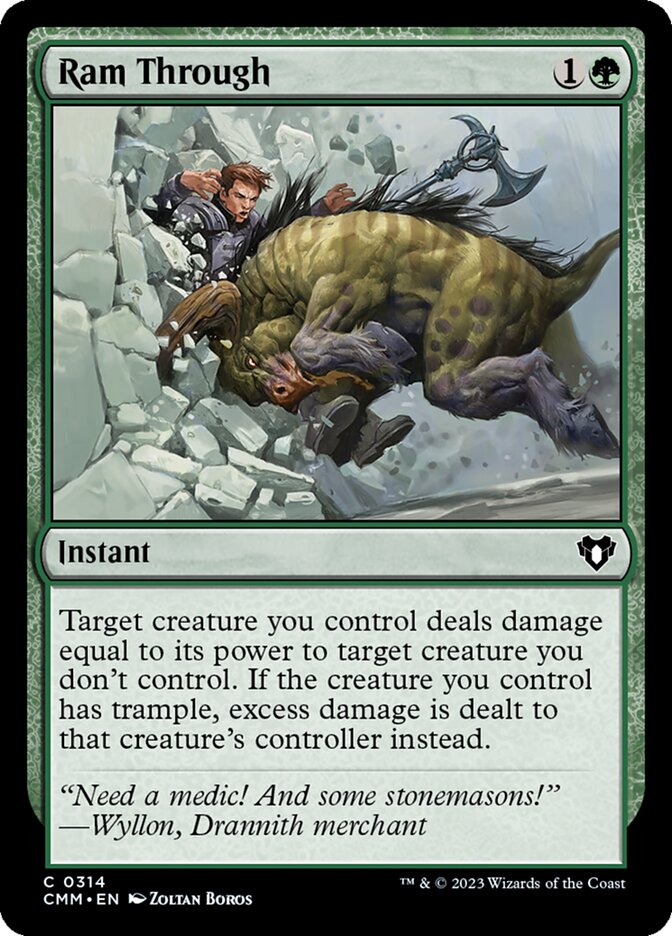
- Hunter’s Insight: This is an amazingly cheap draw-a-billion-cards spell. True, it only works under certain circumstances - but having a big creature and an vulnerable opponent is not unlikely in a multiplayer game.
- Predatory Rampage: Maybe this sorcery won’t end the game on the spot, but I think it’s likely to push one or more opponents into an untenable situation.
- Ram Through: An instant speed punch is great, and Green’s relative abundance of big trample creatures means that it can lop off a nice chunk of an opponent’s life total as well.
Summation
Here’s what I’d keep in mind about Commander Masters:
- The number one most important thing to understand about Commander as a format is that it leans Magic towards a political game. What does that mean?
- In a typical Limited game you want to race out to an early lead and dominate the board. Doing the same thing in Commander makes you an early target that may get beaten down beyond a chance to recover.
- There’s a social aspect of Commander that’s important to keep in mind. A friendly and open attitude can make you less of a target; conversely, a conniving attitude can make others suspicious.
- Don’t get too wrapped up in winning or losing. There’s an element of randomness in Magic that’s only multiplied in Commander. Embrace the chaos and have fun!
- Limited Commander games often have a single moment after which the game ends quite quickly. This pivot point can be anything from a mass removal spell to a supremely powerful creature. However in this format, it’s just as likely to be the introduction of the Monarch. Combat flies fast and furious once someone becomes the ruler and starts drawing cards, and you’ll want to expend your resources appropriately.
- Single target removal spells are quite limited, so be sure to be judicious with the ones that you have.
- There are board wipes at uncommon. Don’t overextend unless you have to, and try and have a backup plan if all your creatures just suddenly… go away. At the same time, don’t hesitate to commit to the board if you feel like you have no other choice.
Good luck and have fun!










